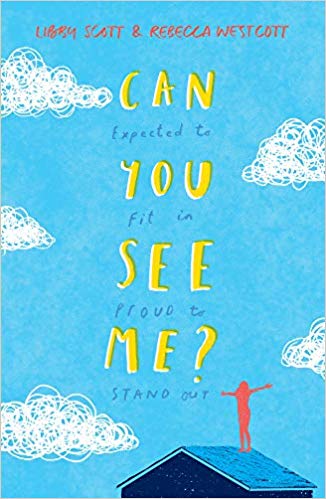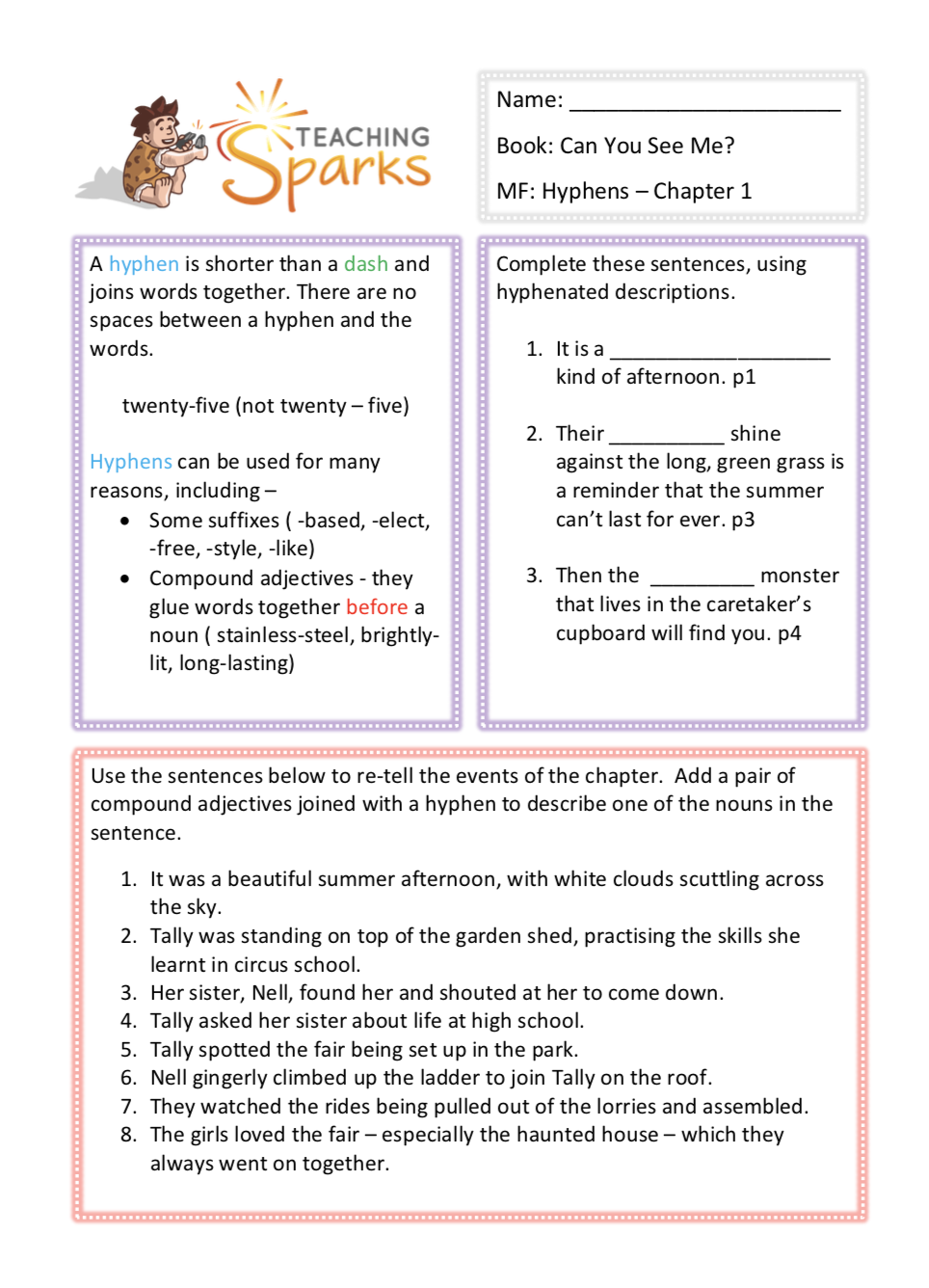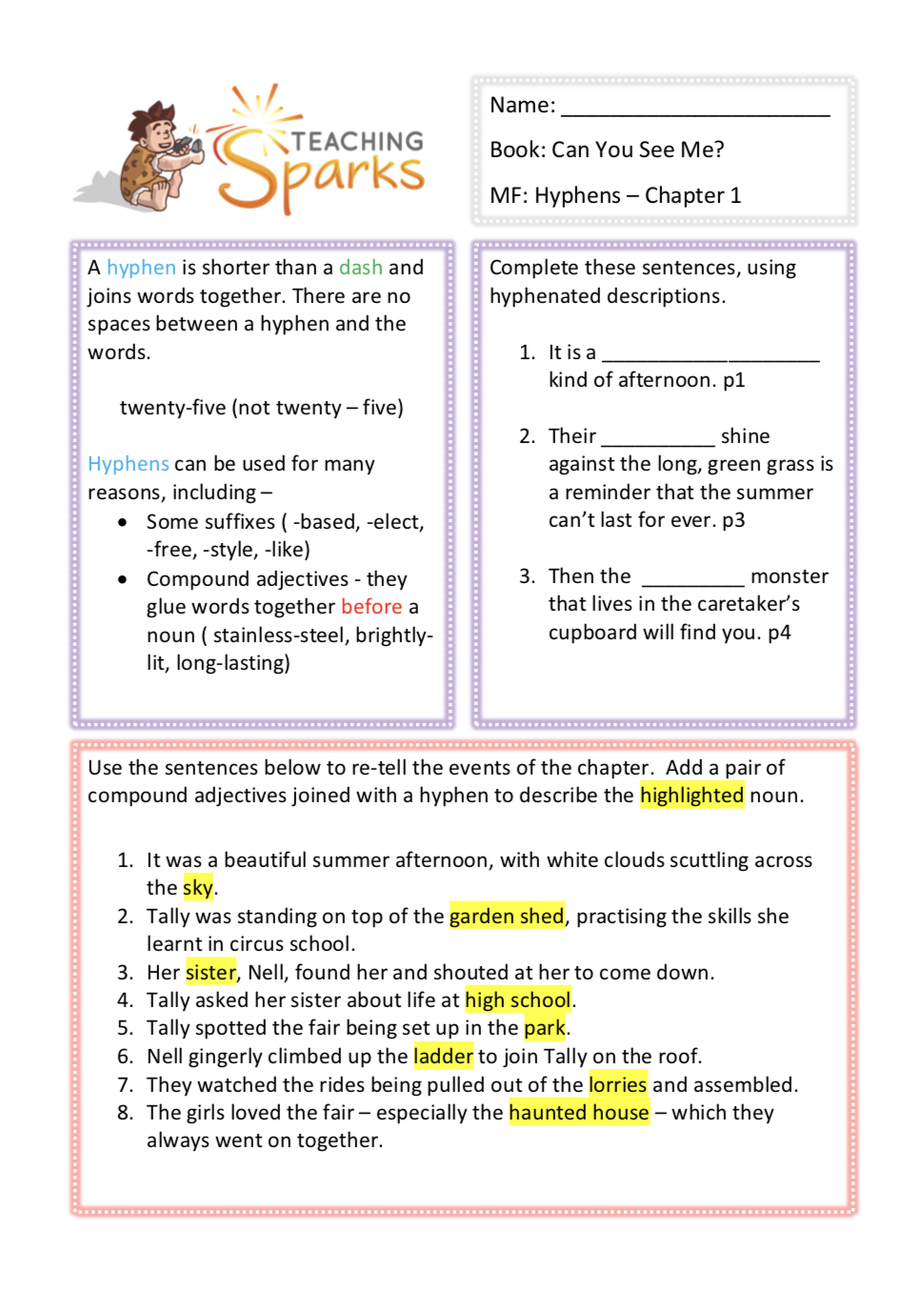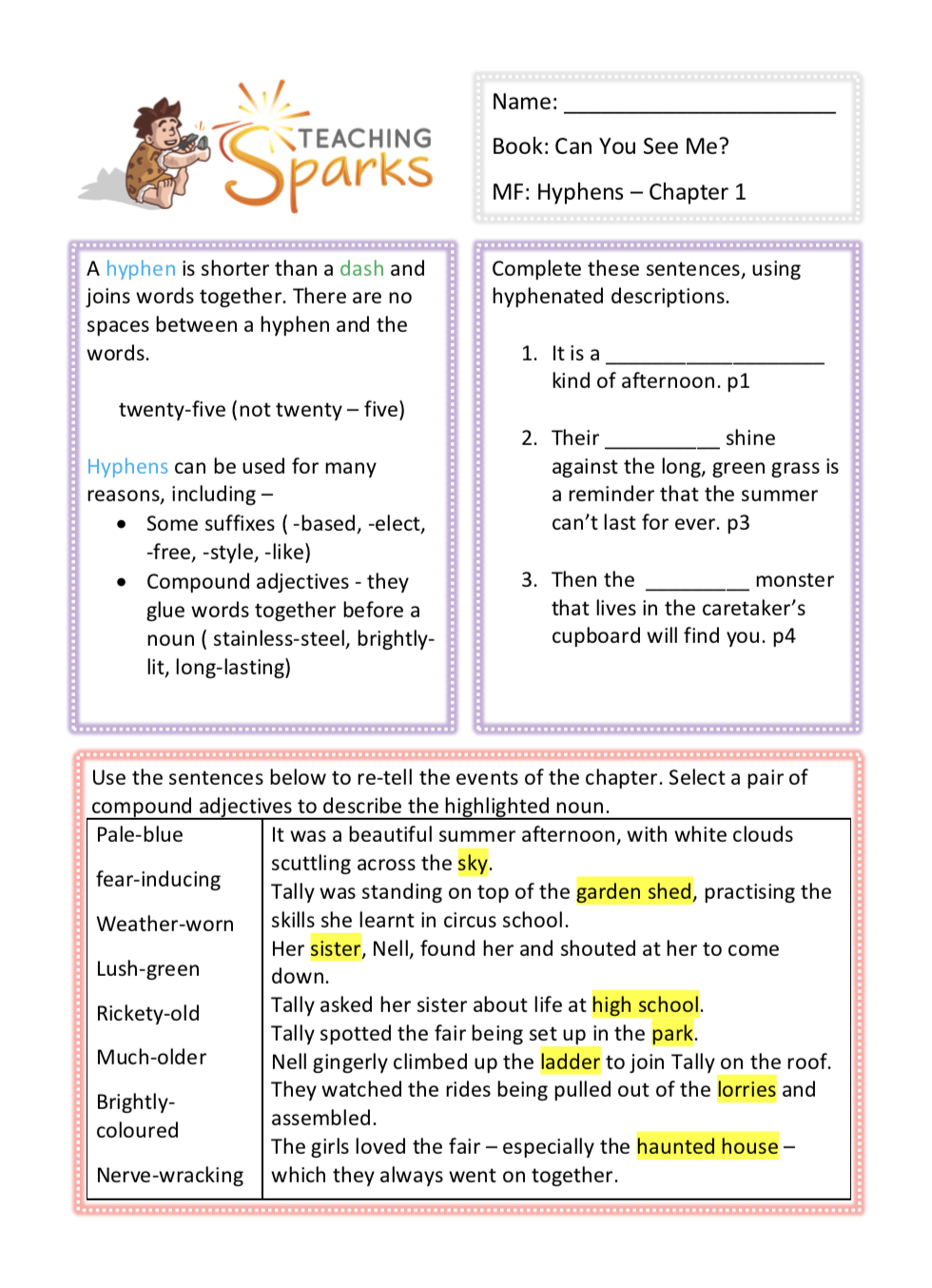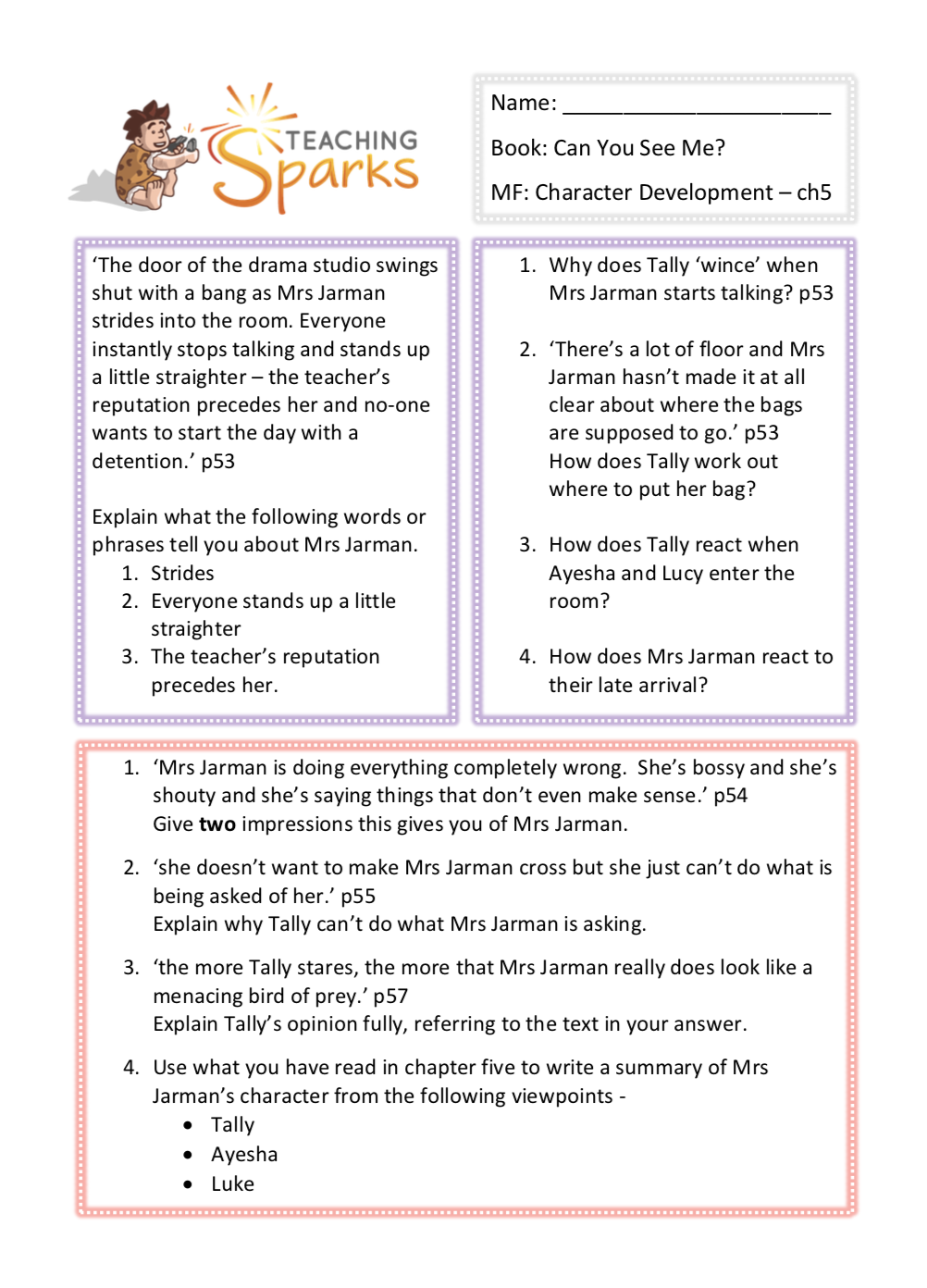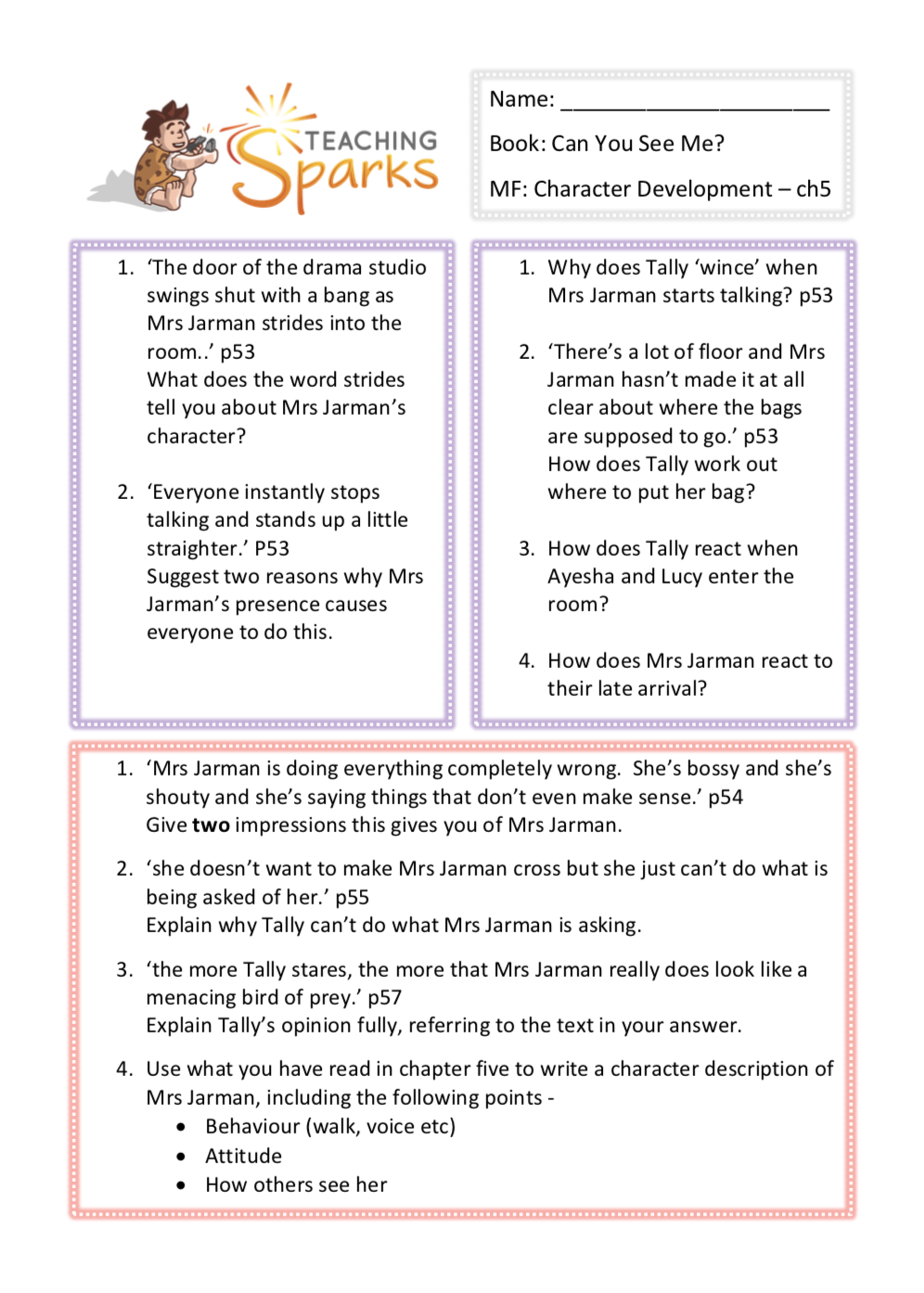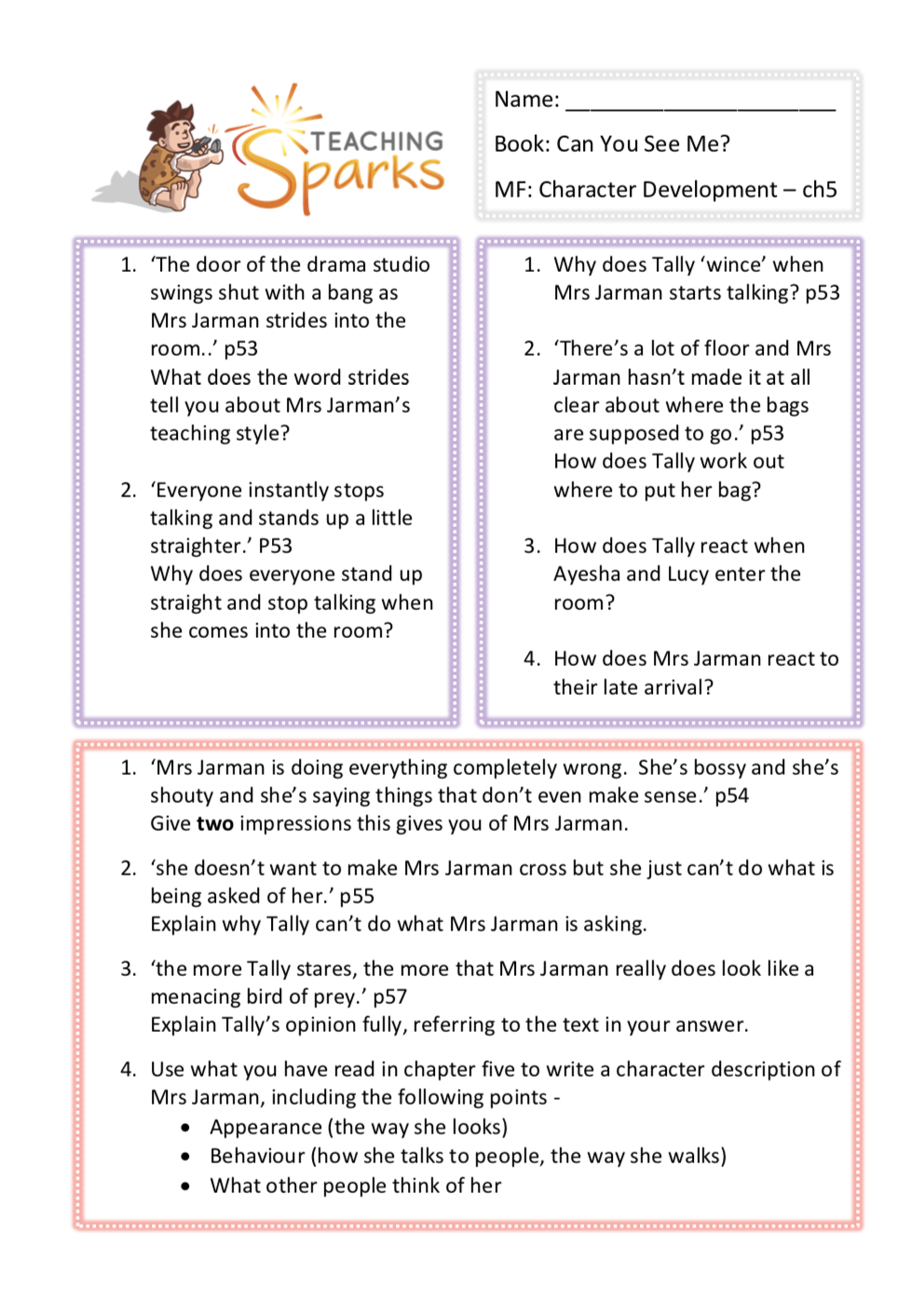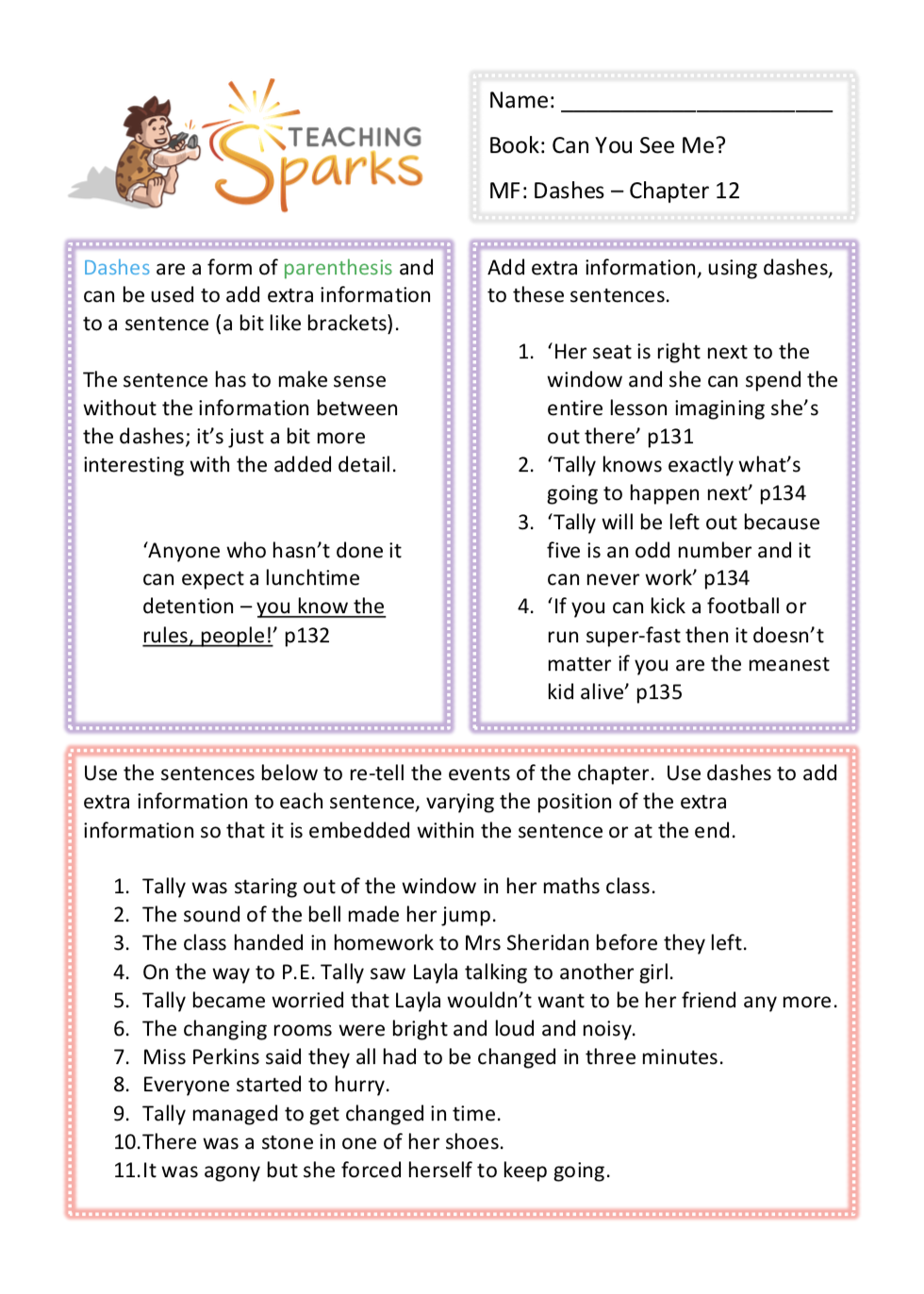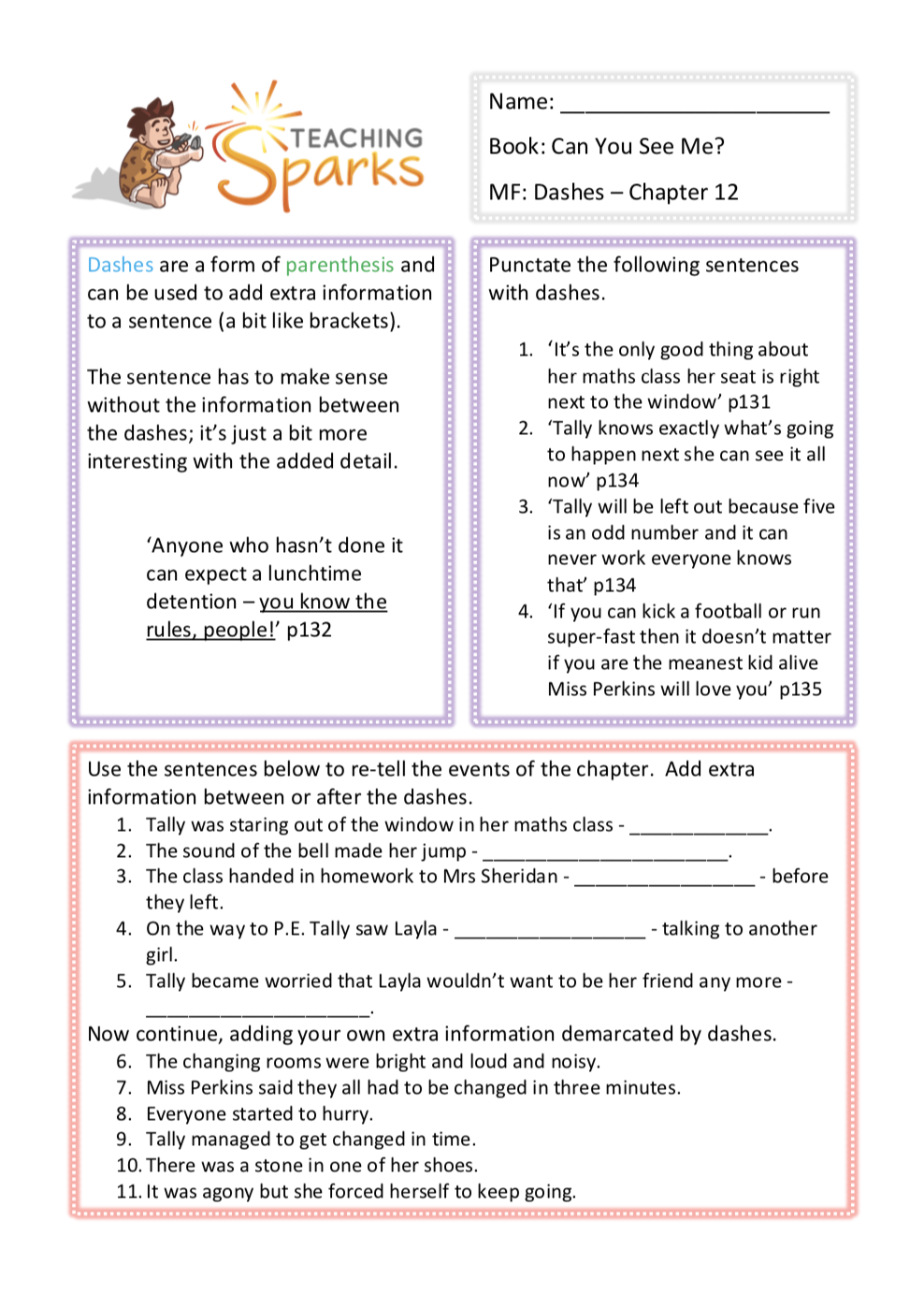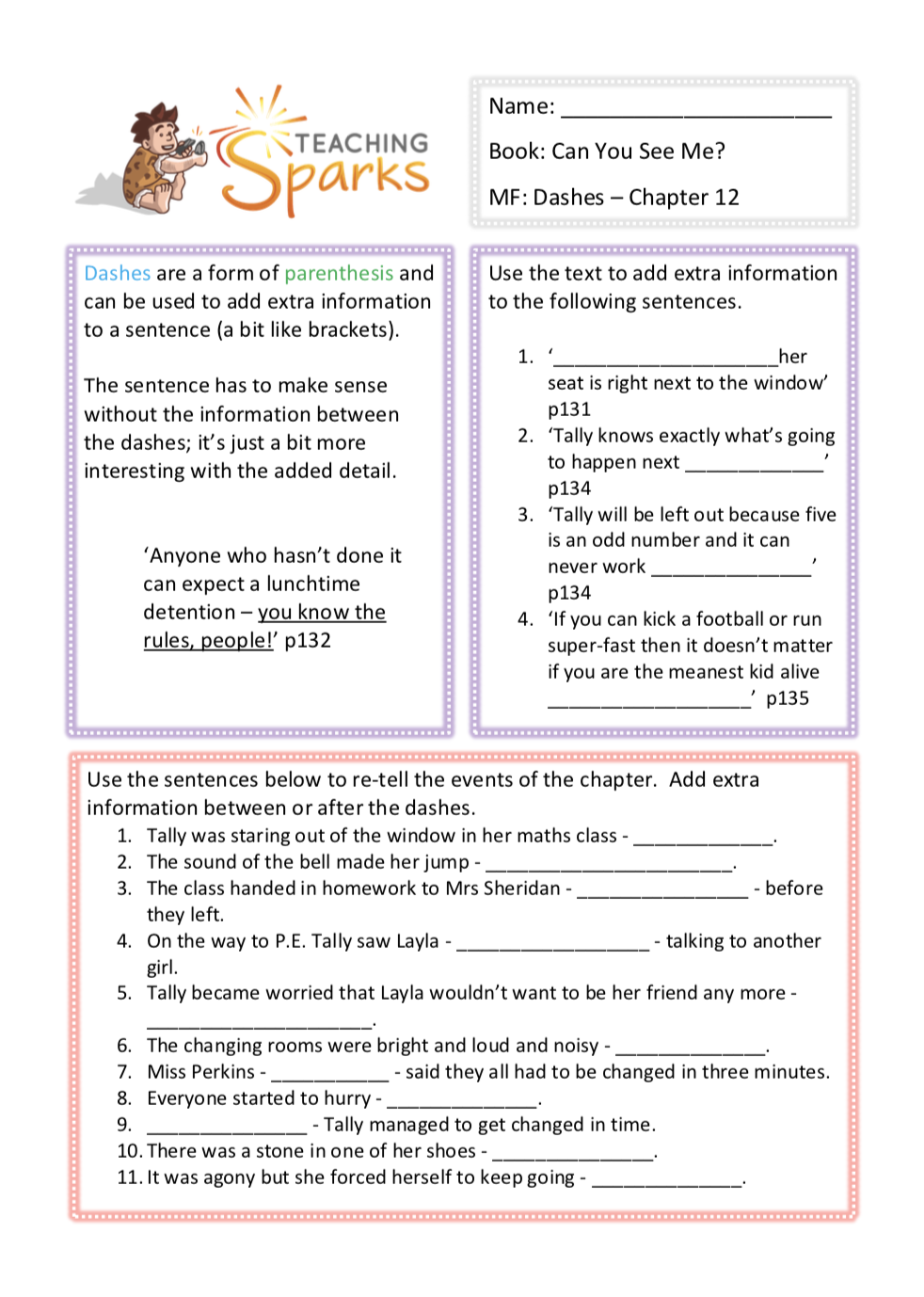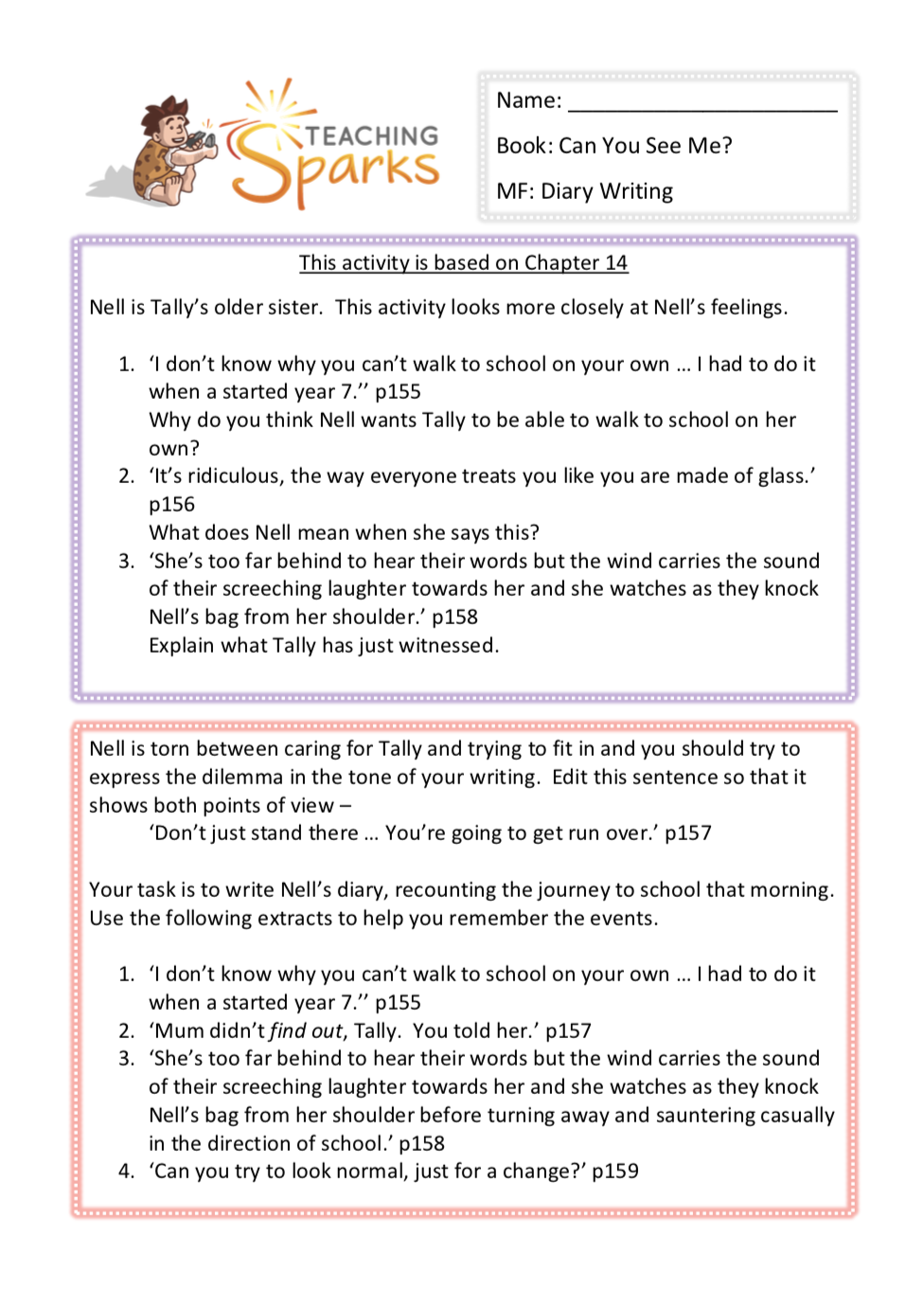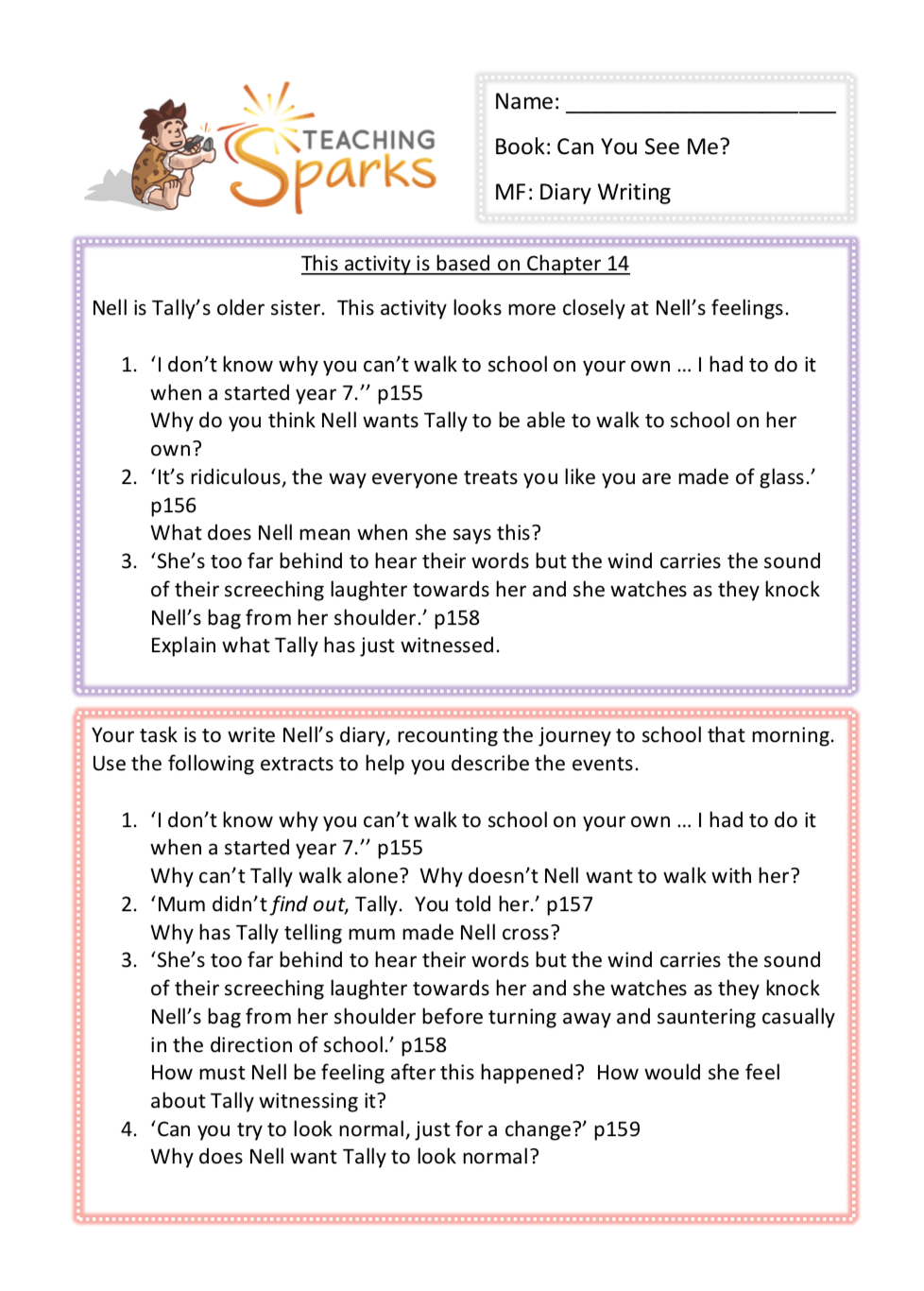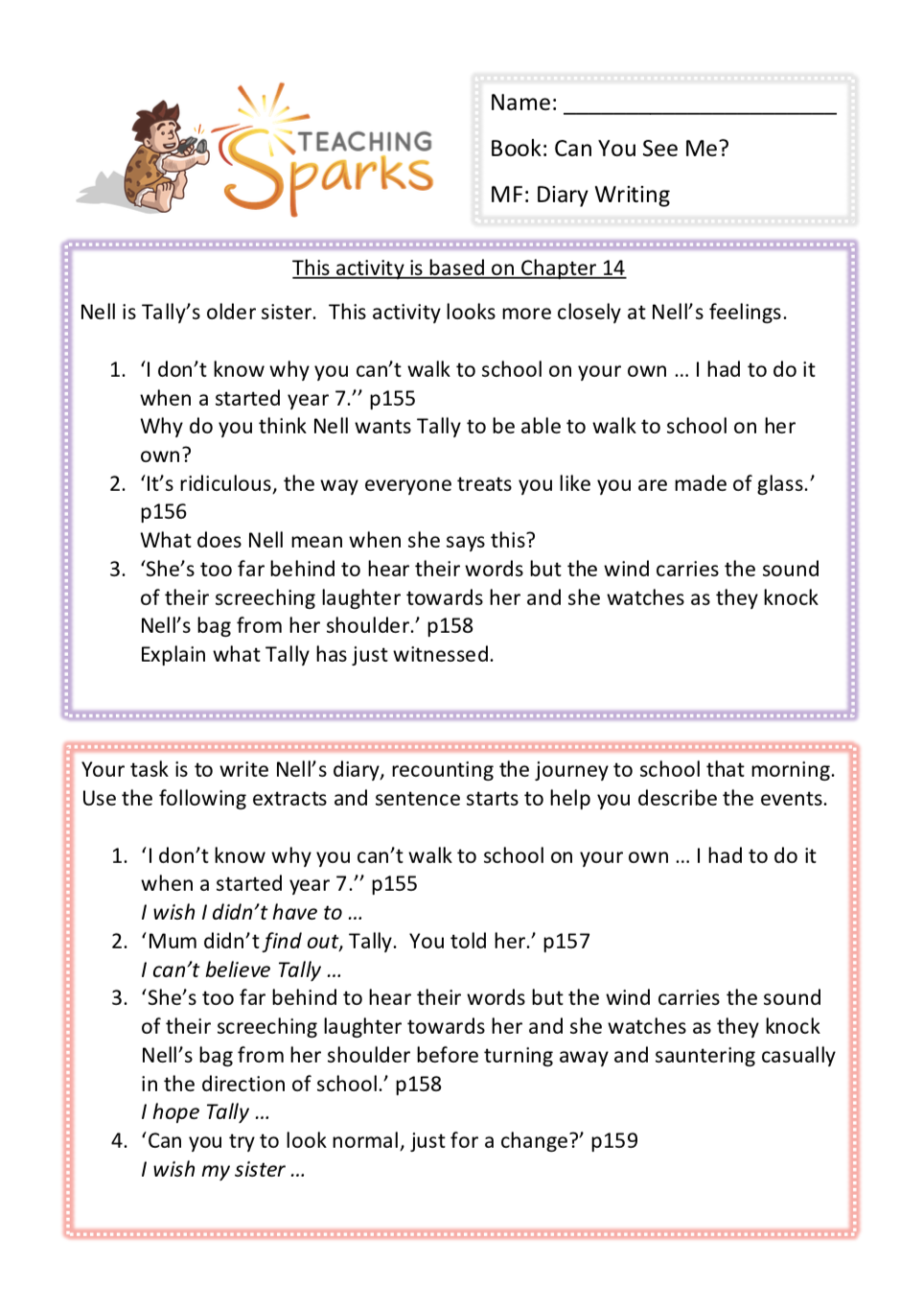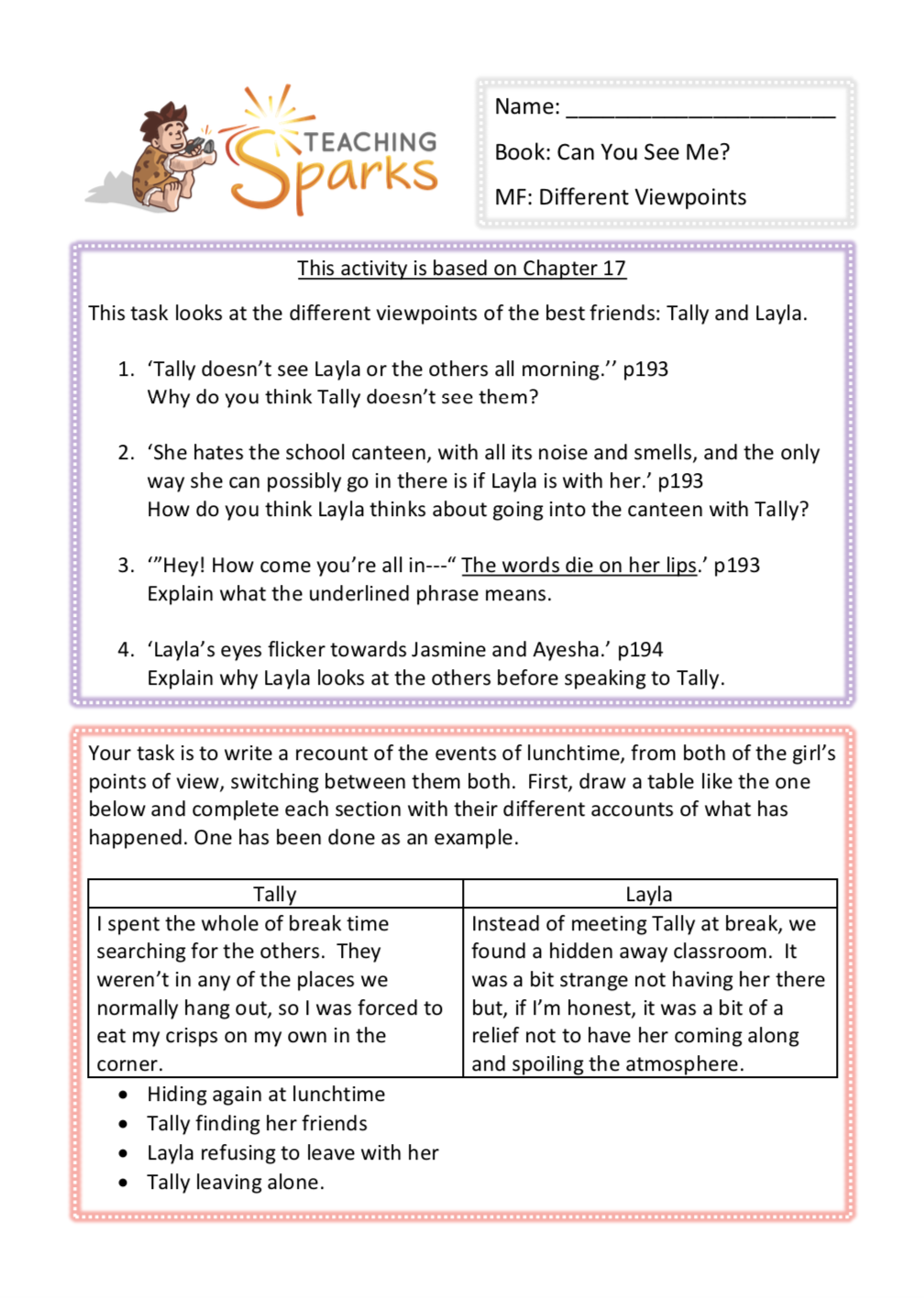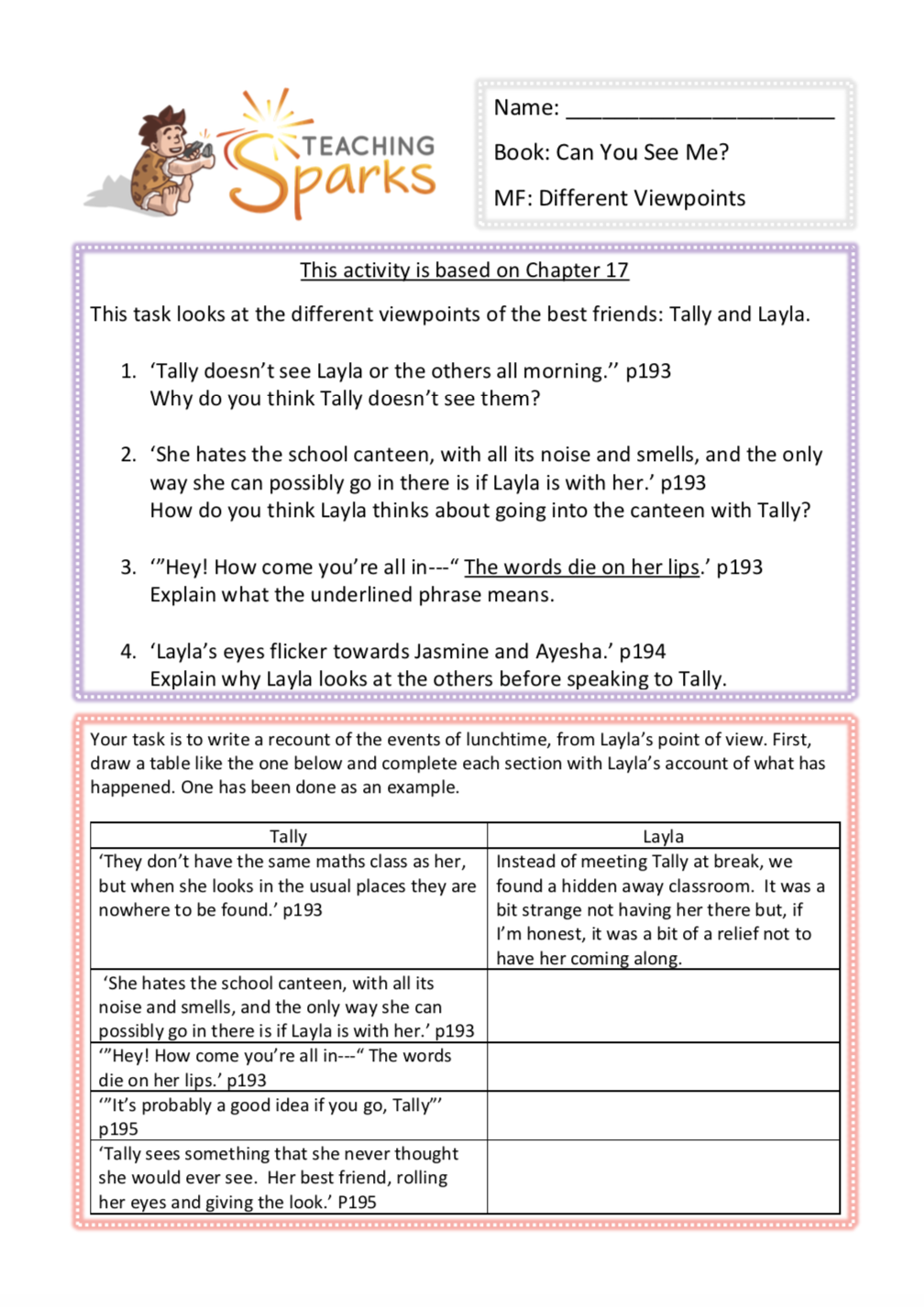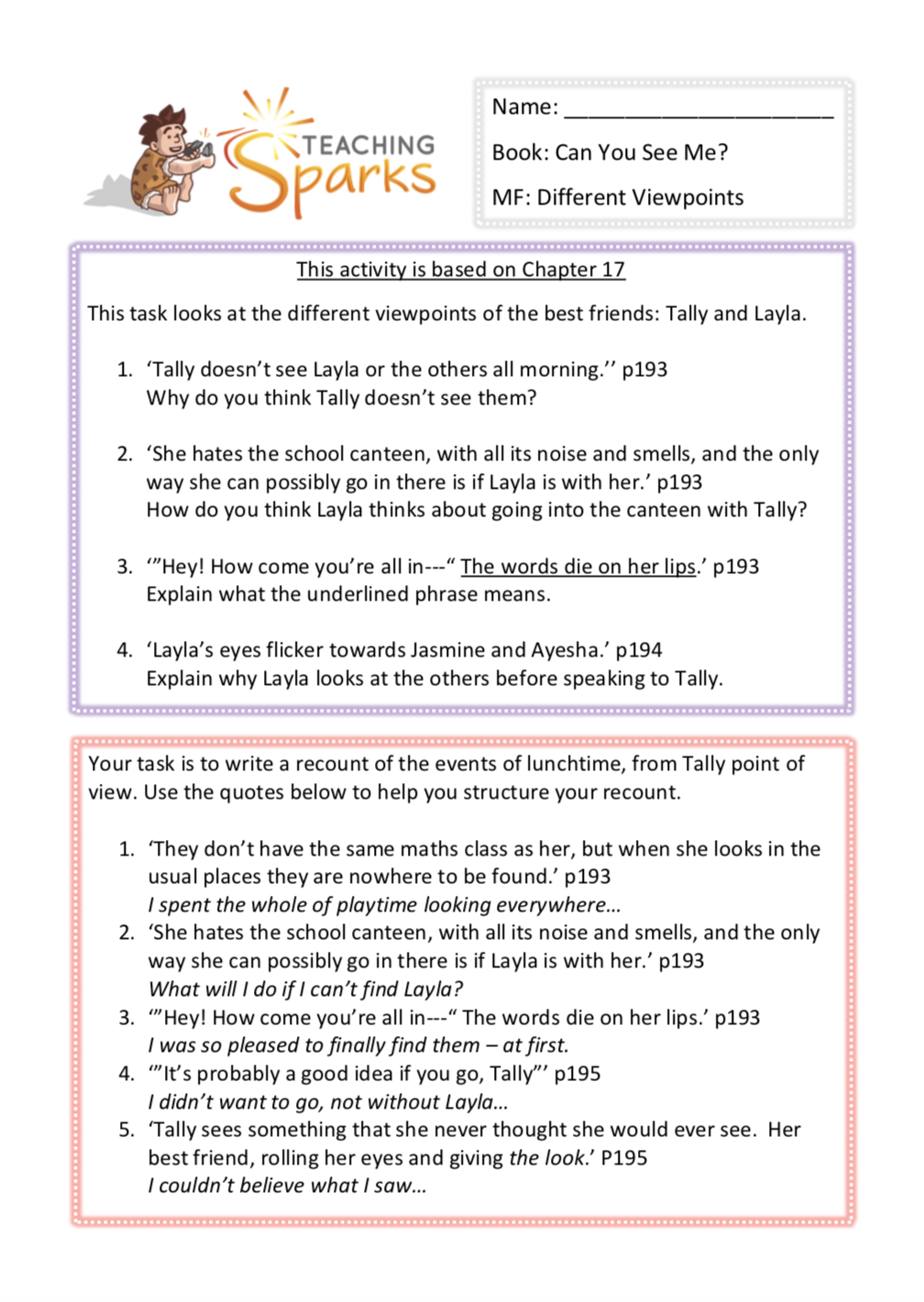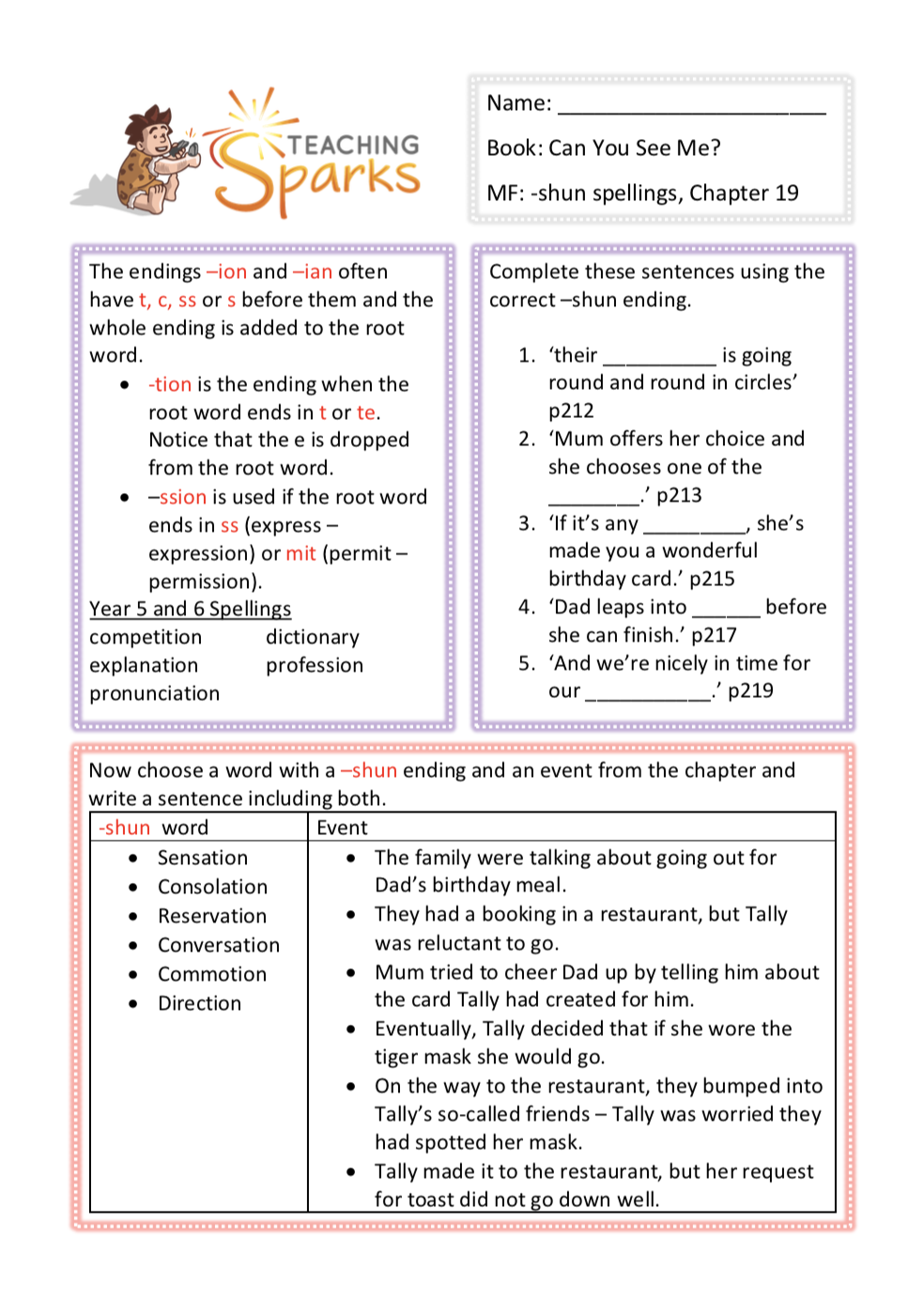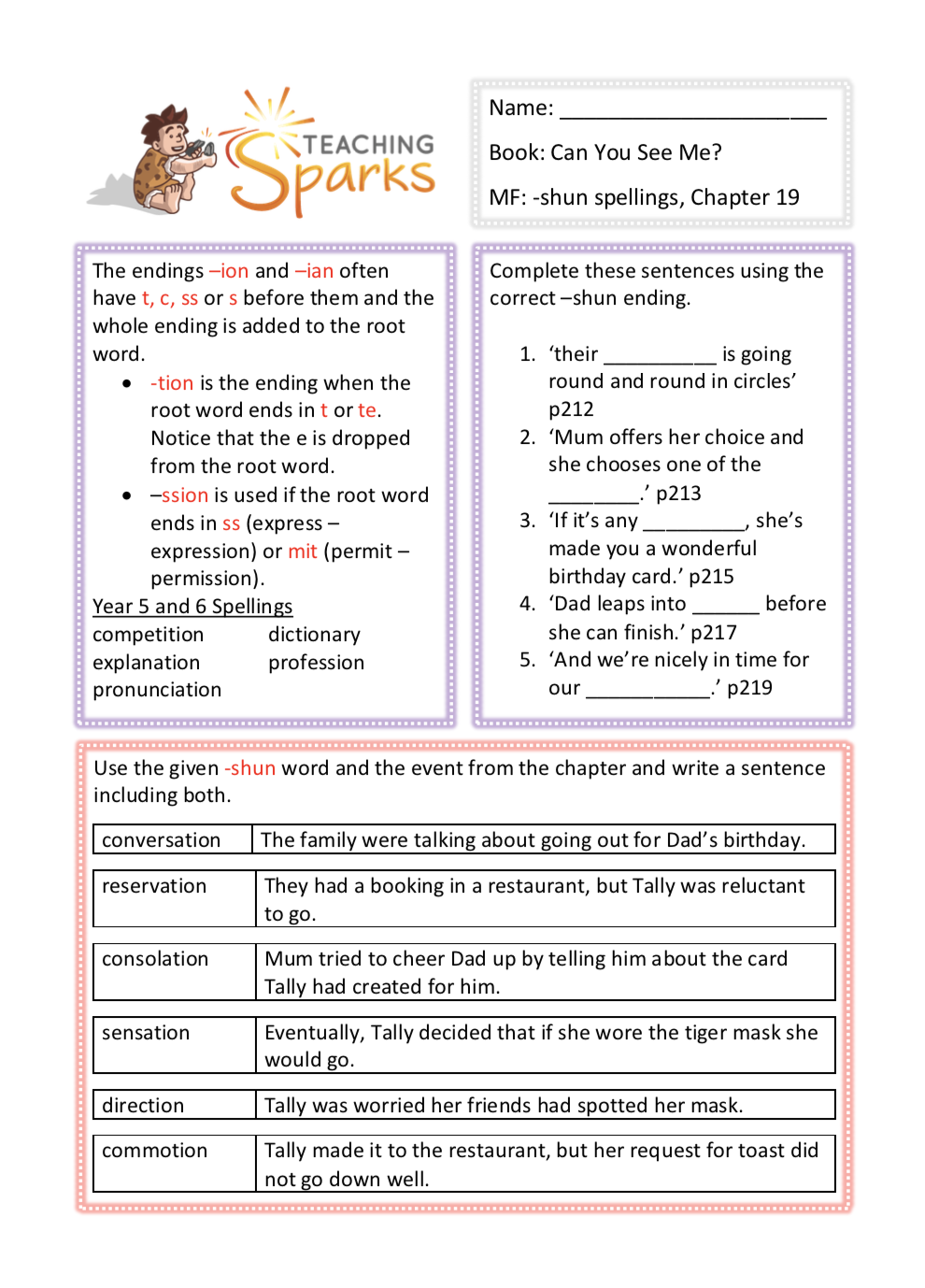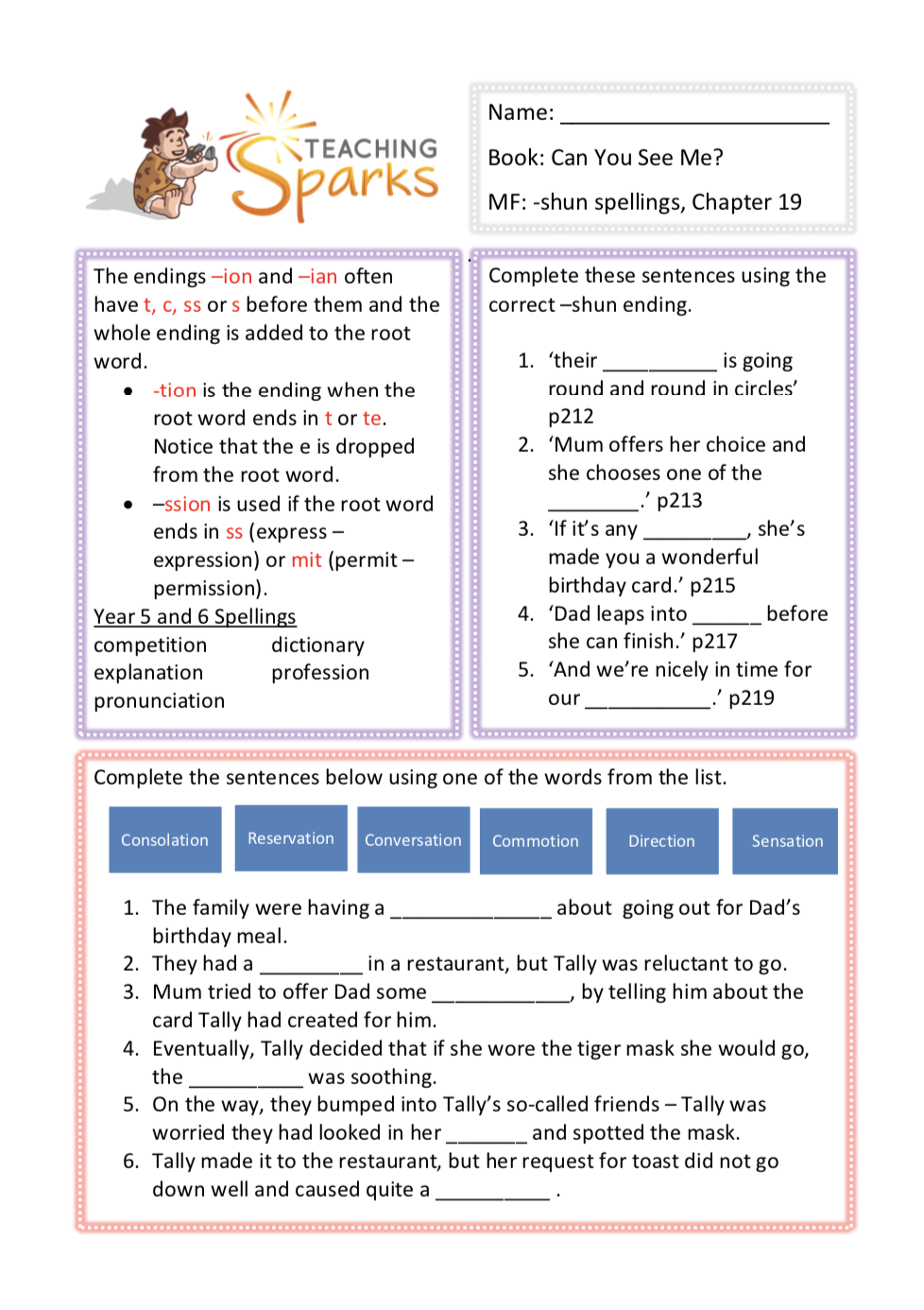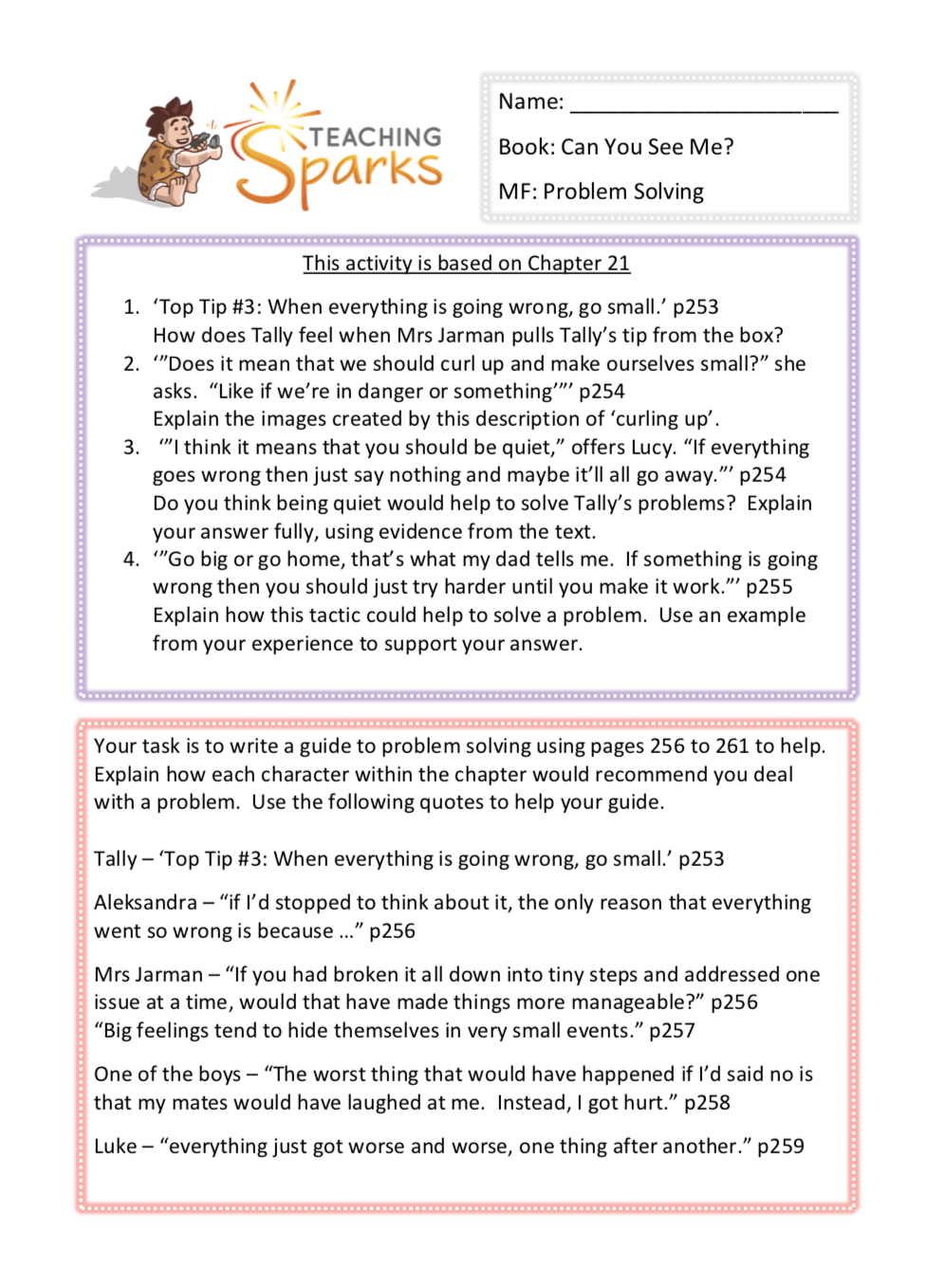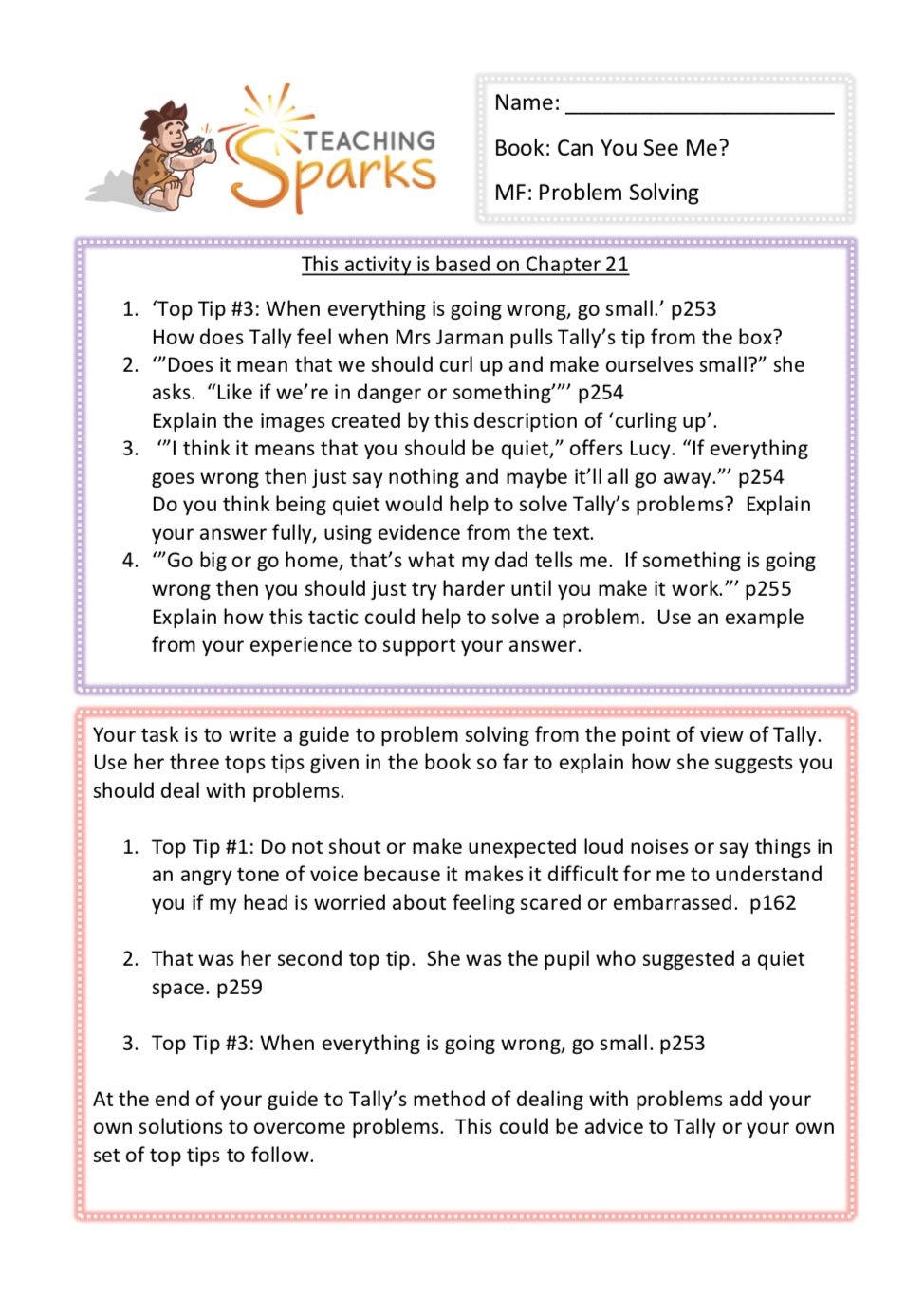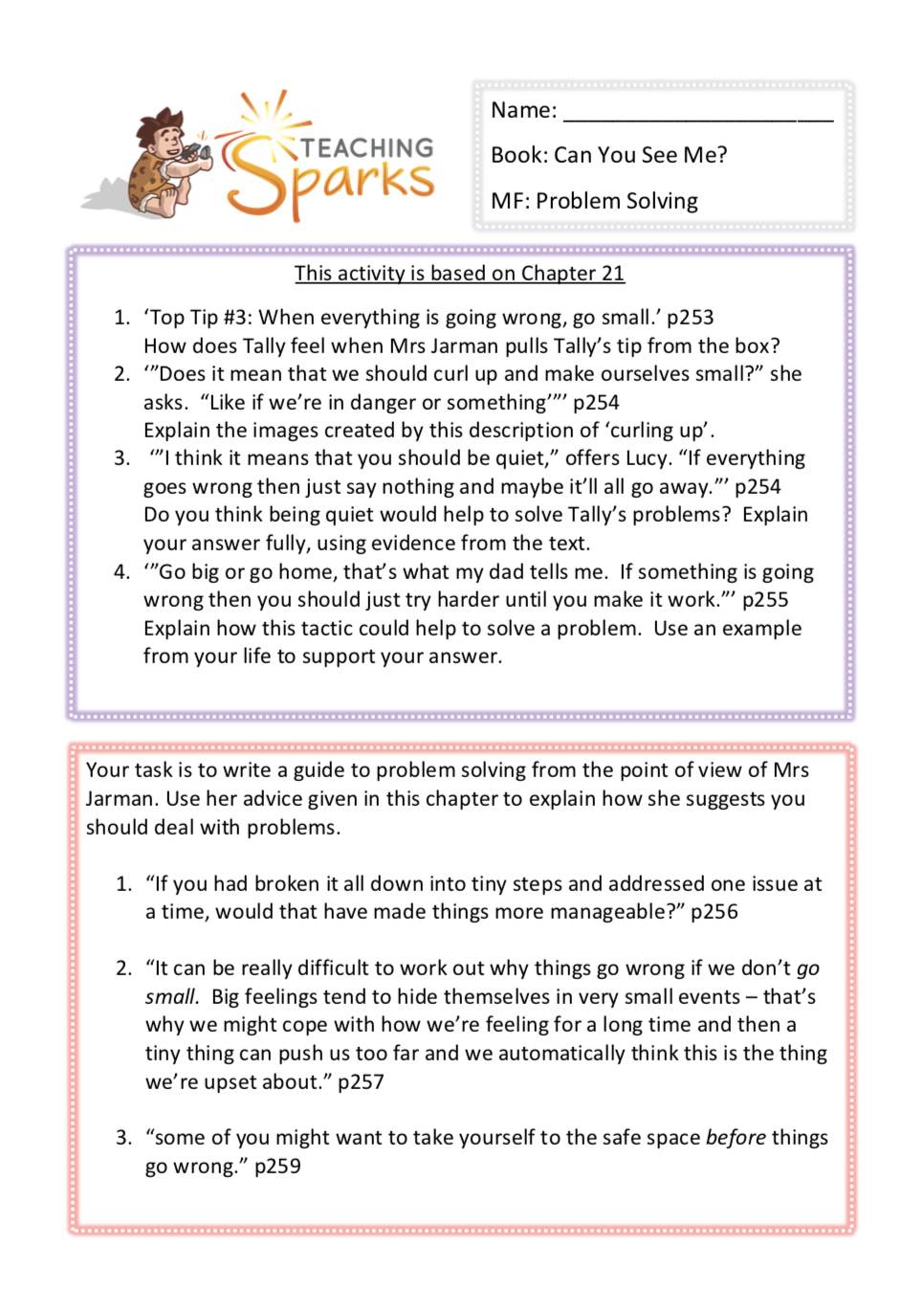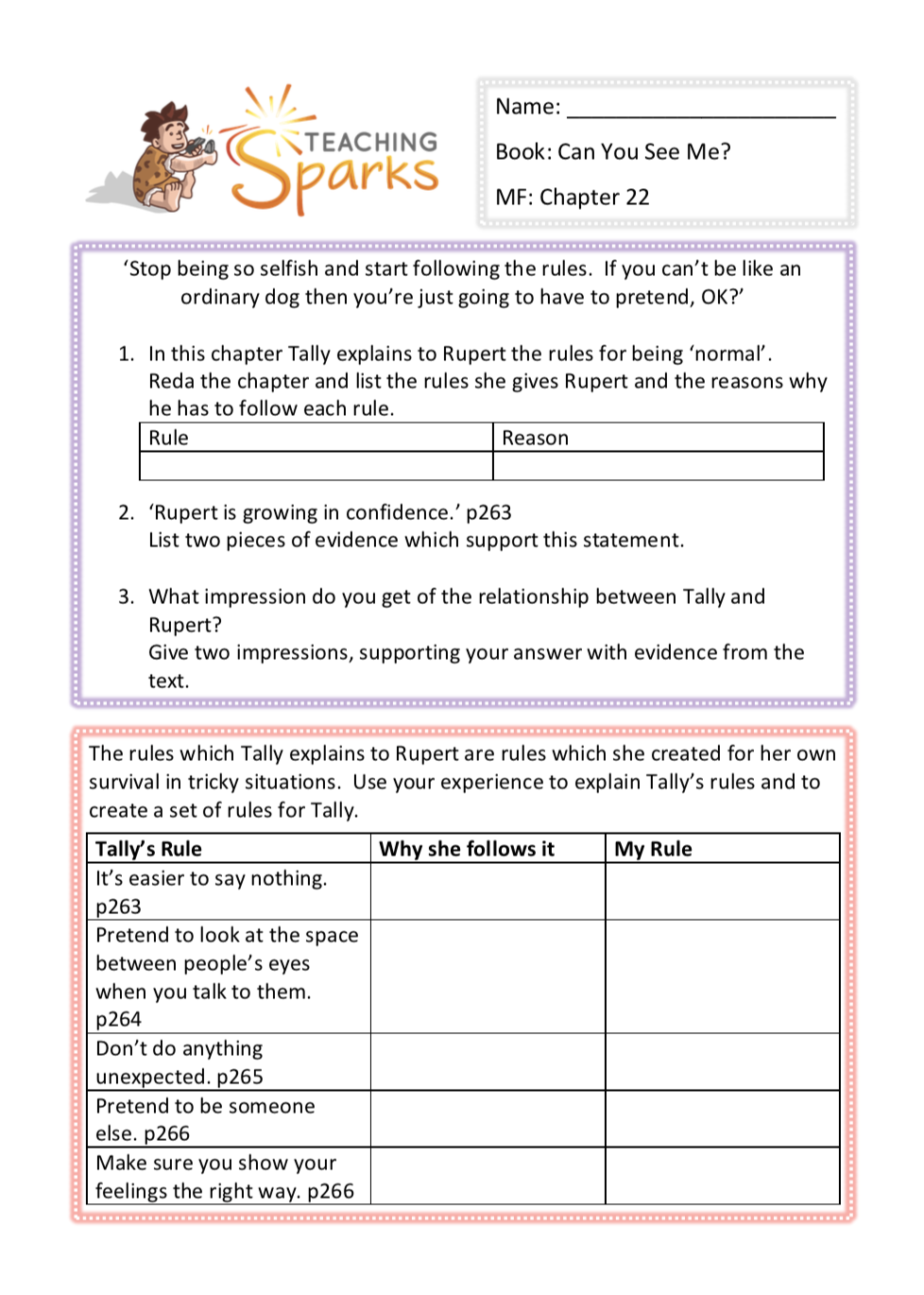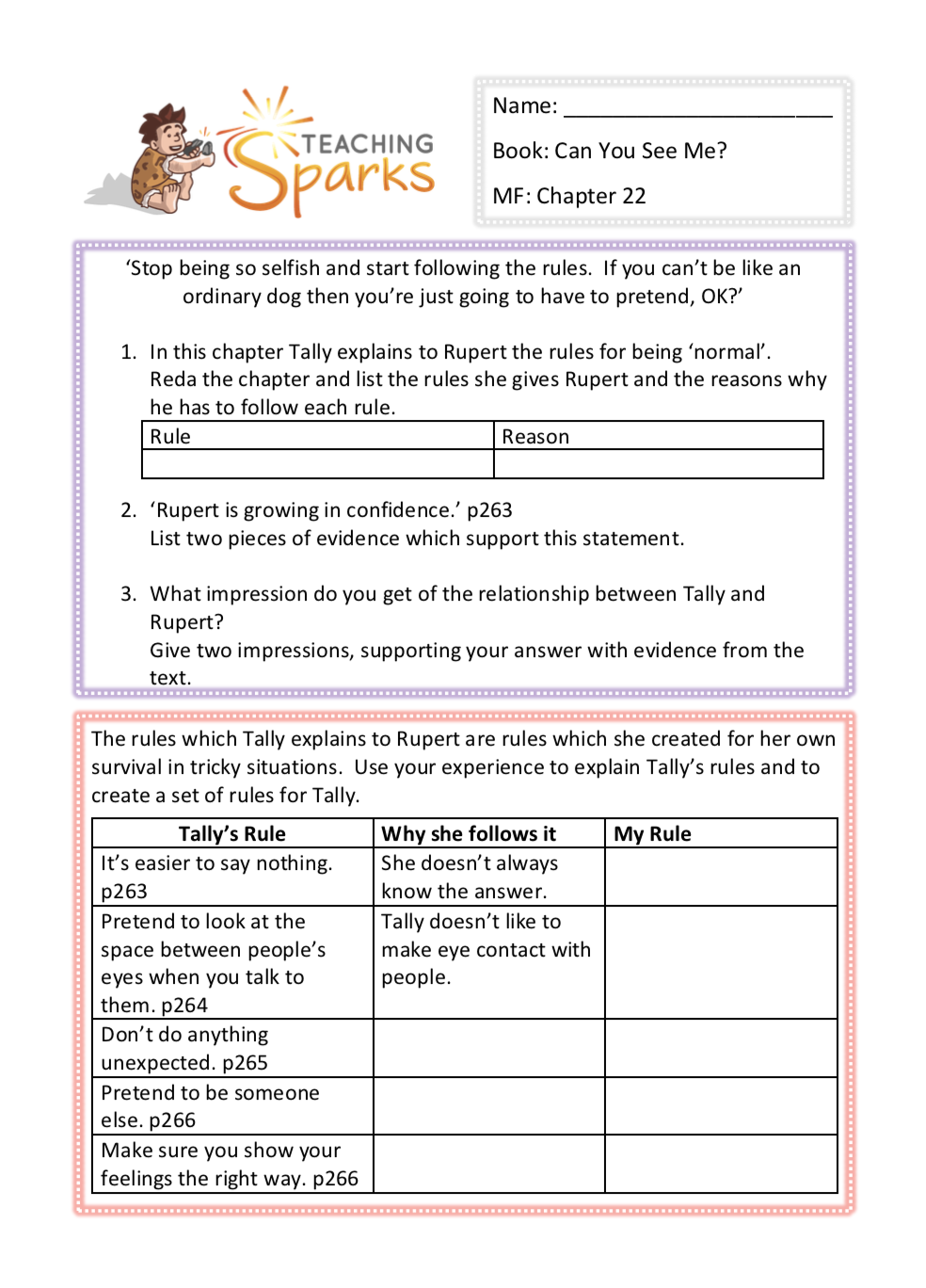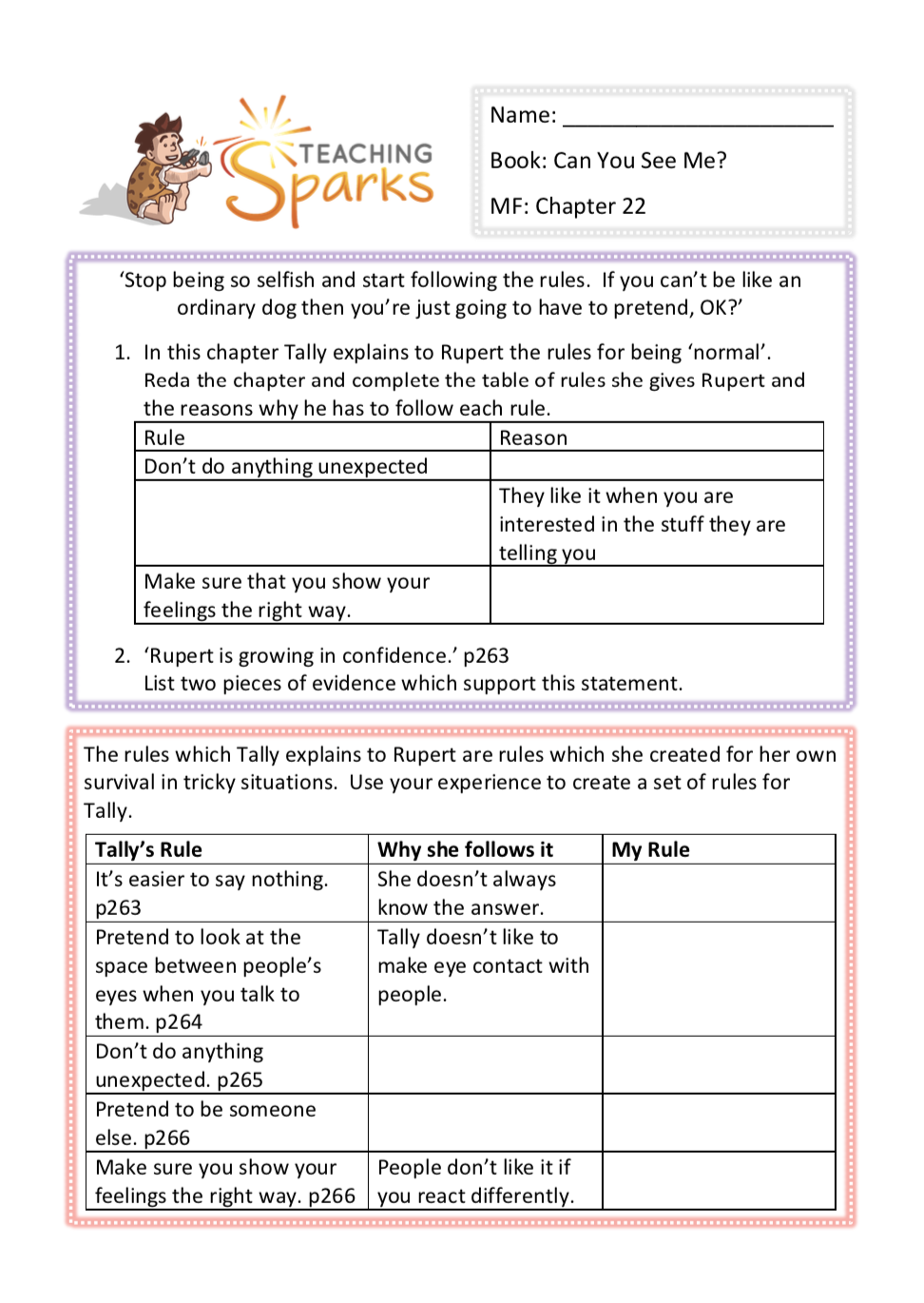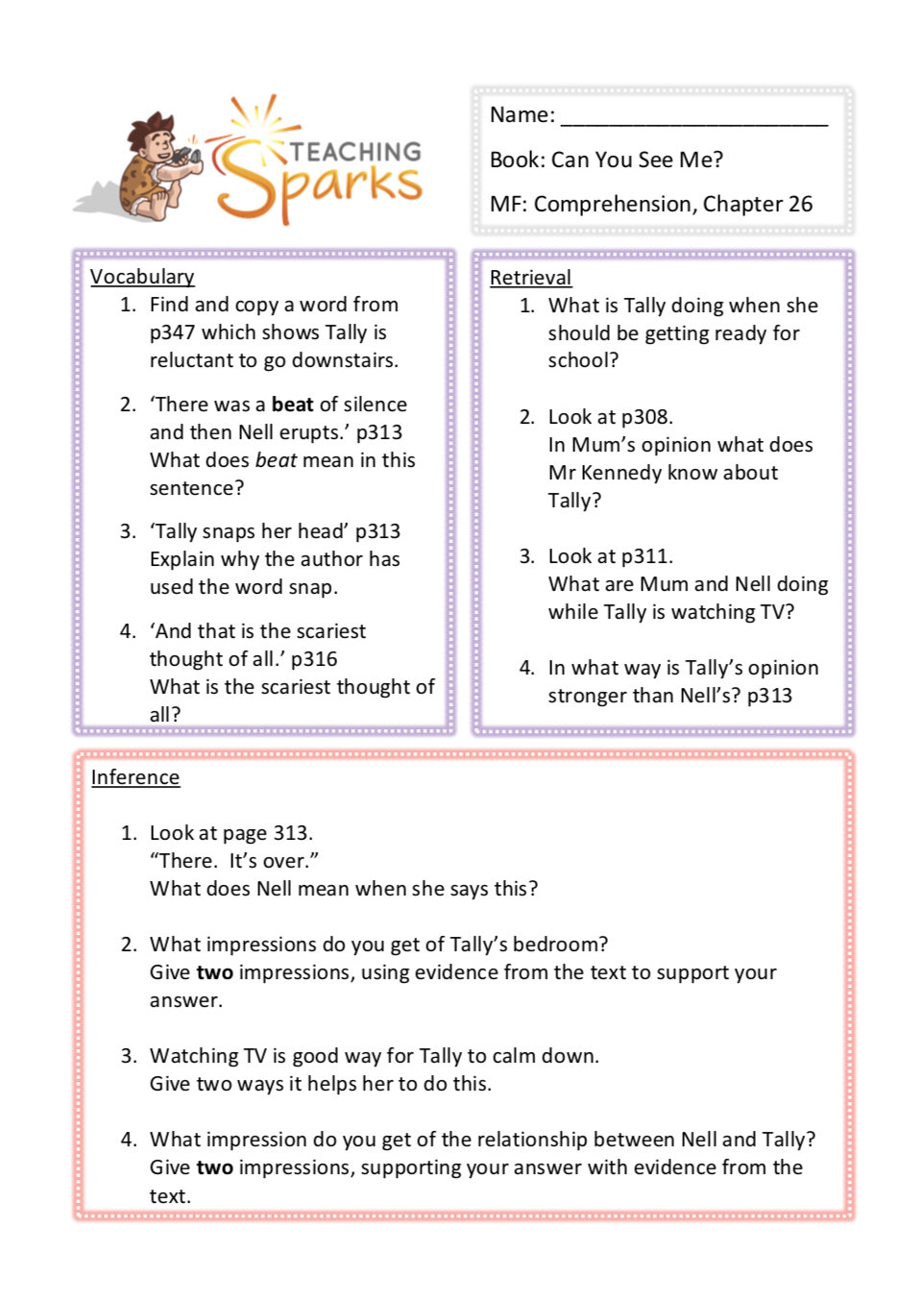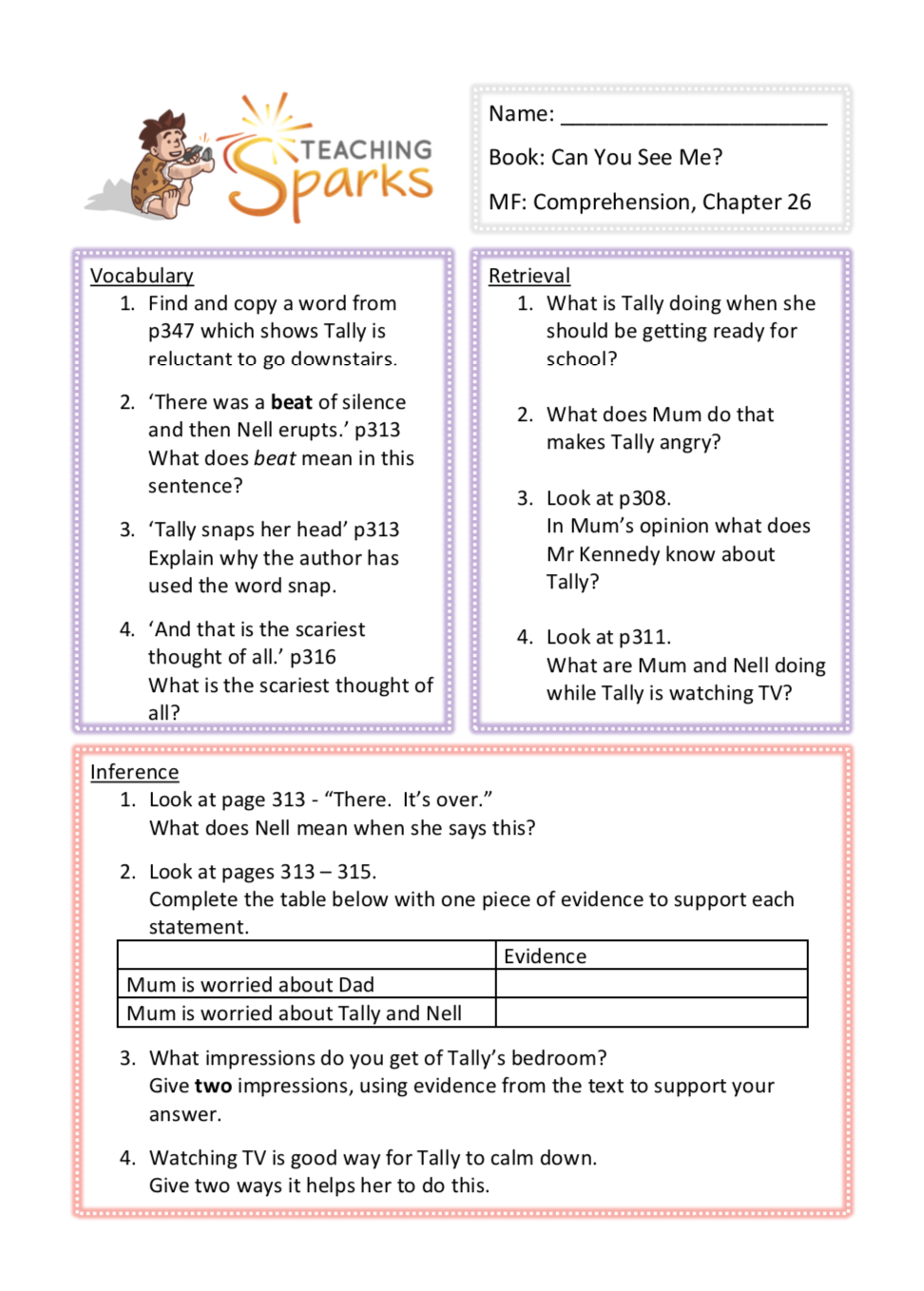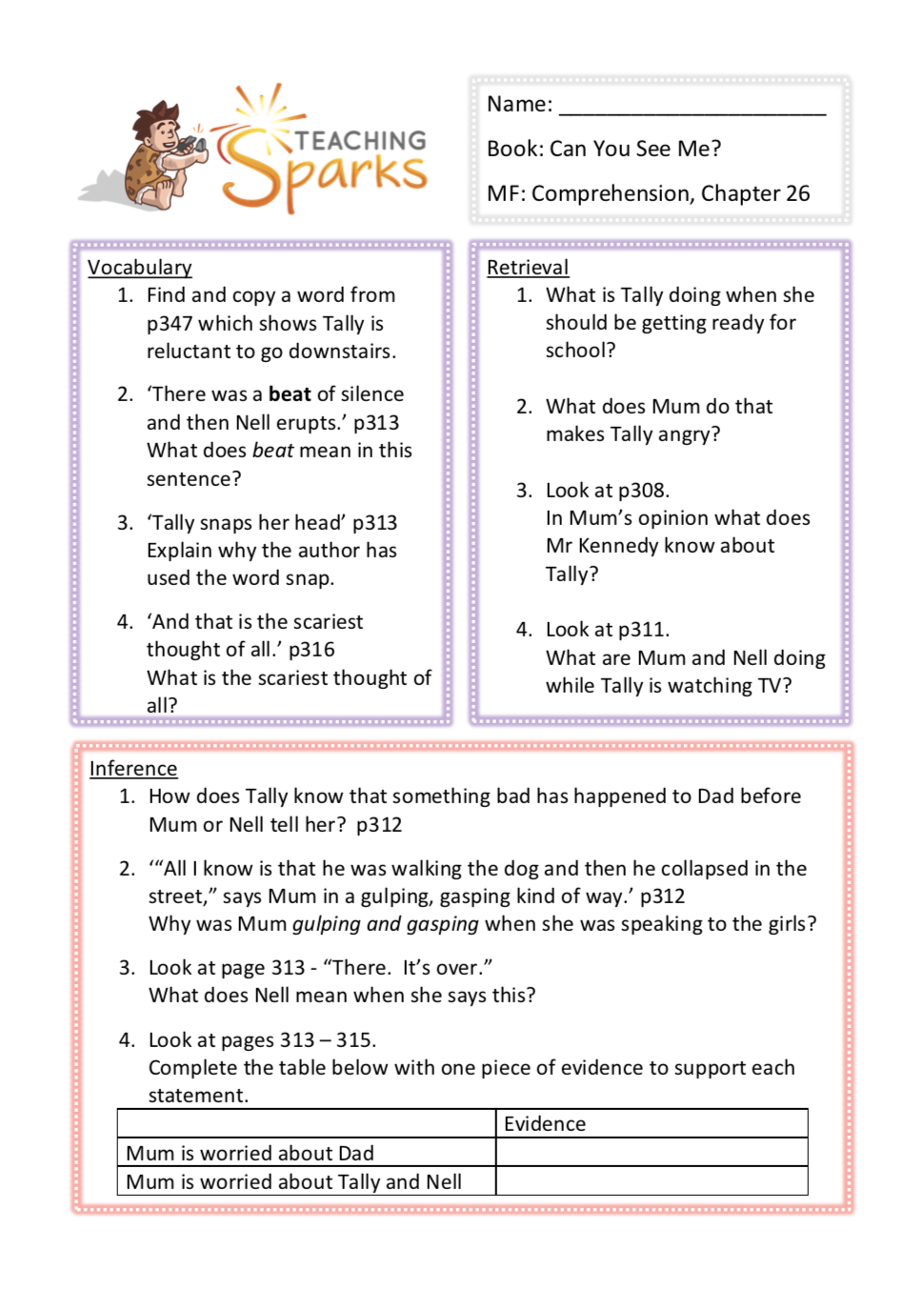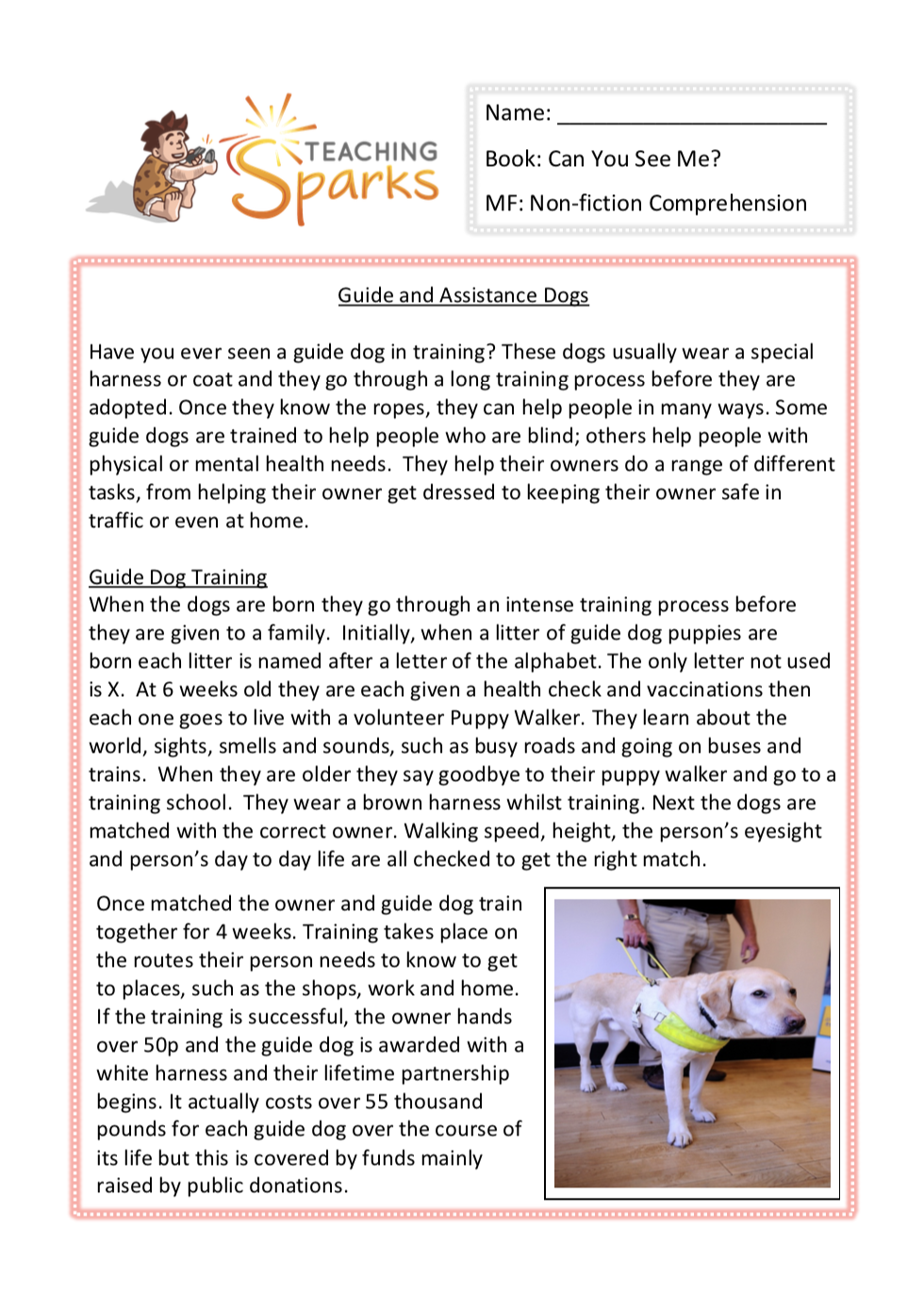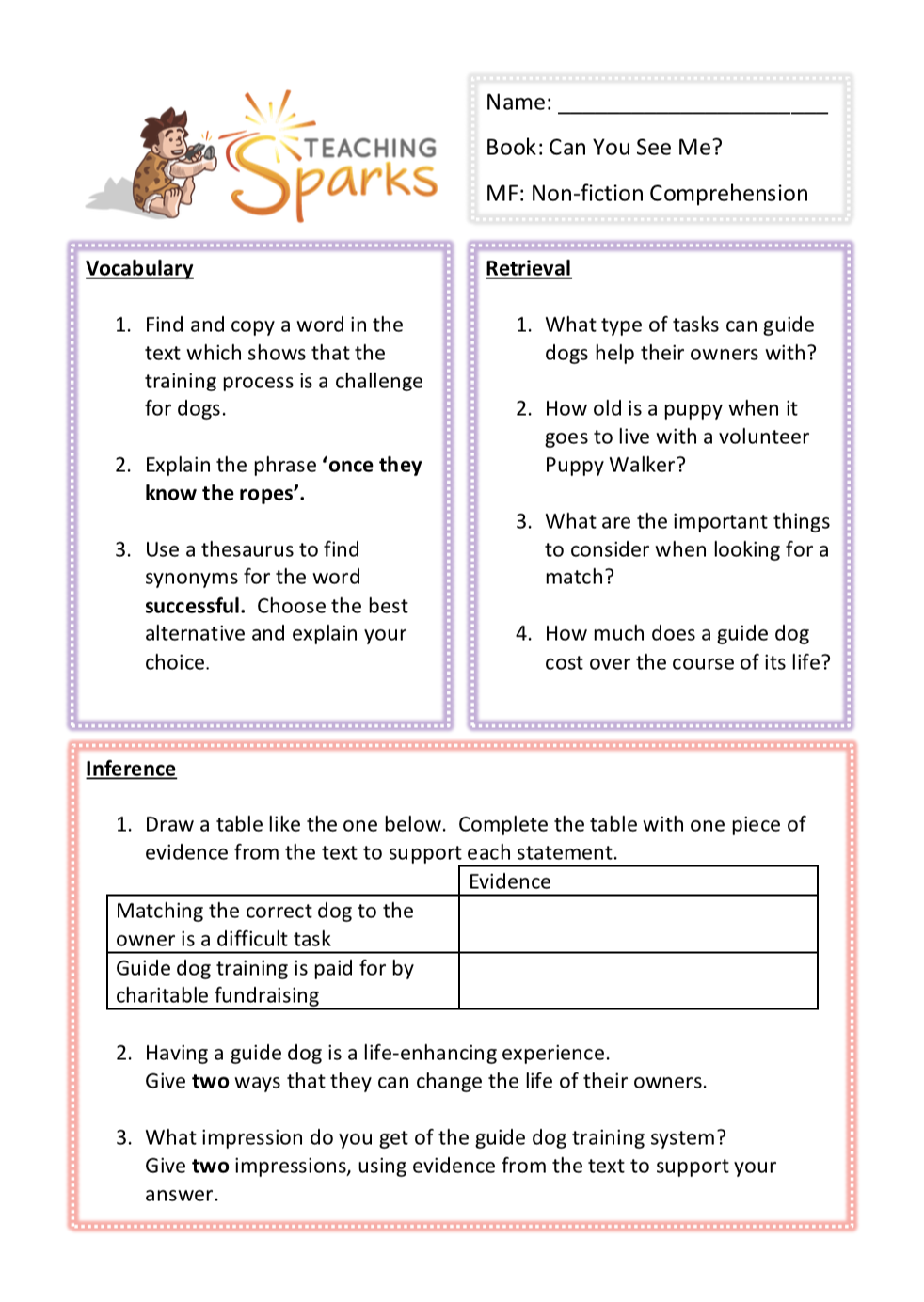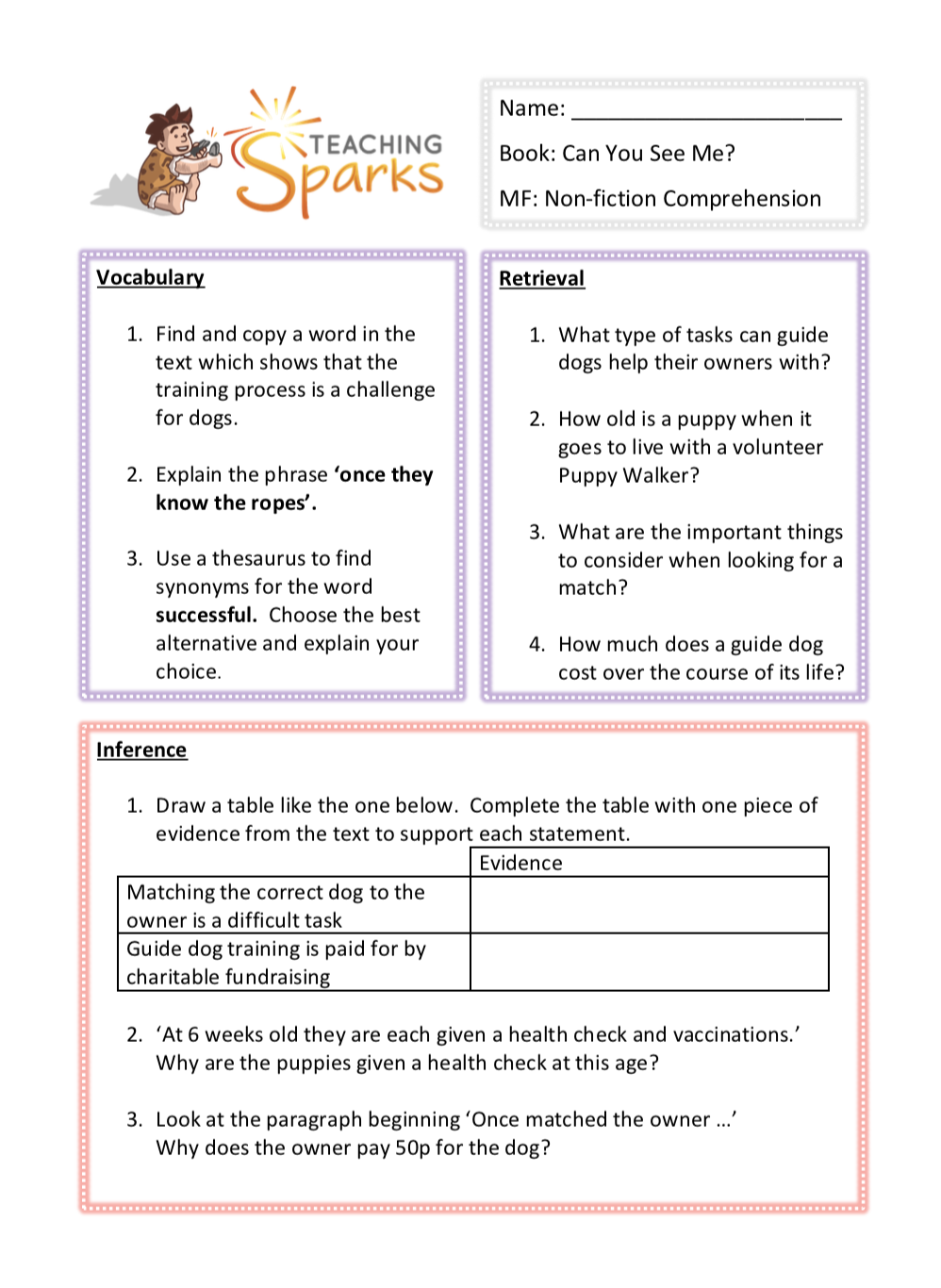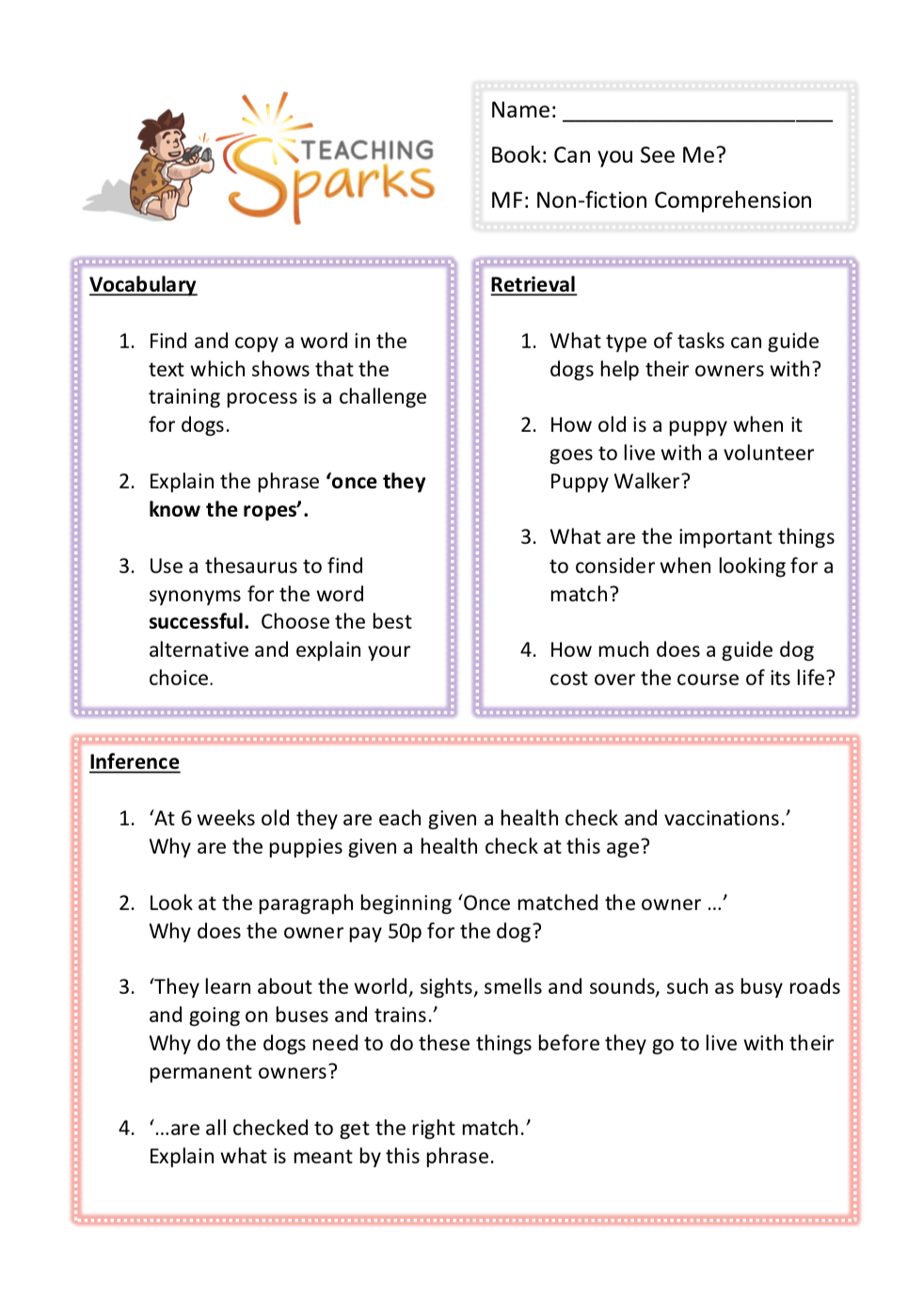Can You See Me?
Can You See Me? by Libby Scott and Rebecca Westcott
With diary entries written by eleven-year-old Libby Scott, based on her own experiences of autism, this pioneering book, written in collaboration with esteemed author Rebecca Westcott, hasbeen widely praised for its realistic portrayal of autism.
Tally is eleven years old and she’s just like her friends. Well, sometimes she is. If she tries really hard to be. Because there’s something that makes Tally not the same as her friends. Something she can’t cover up, no matter how hard she tries: Tally is autistic.
Tally’s autism means there are things that bother her even though she wishes they didn’t. It means that some people misunderstand, her and feel frustrated by her.
People think that because Tally’s autistic, she doesn’trealise what they’re thinking, but Tally sees and hears – and notices – all of it. And, honestly? That’s not the easiest thing to live with.
Main Focus: Hyphens
This Year 5 | Year 6 resource is linked to Chapter 1 of the book ‘Can You See Me?’ and focuses on hyphens.
A hyphen is shorter than a dash and joins words together. There are no spaces between a hyphen and the words.
twenty-five (not twenty – five)
Hyphens can be used for many reasons, including –
- Some suffixes ( -based, -elect, -free, -style, -like)
- Compound adjectives – they glue words together beforea noun ( stainless-steel, brightly-lit, long-lasting)
Main Focus: Character Development
This resource helps your KS2 class to look deeper in the development of the character Mrs Jarman in the story.
Your Year 5 | Year 6 class will look at the events and vocabulary the author has used to help build up a picture in the reader’s head and give them information about the type of character she is.
Unlock ResourceMain Focus: Dashes
This Ks2 literacy resource is linked to Chapter 12 and focuses on dashes to help your children add more details to their sentences.
Dashes are a form of parenthesis and can be used to add extra information to a sentence (a bit like brackets).
The sentence has to make sense without the information between the dashes; it’s just a bit more interesting with the added detail.
‘Anyone who hasn’t done it can expect a lunchtime detention – you know the rules, people!’ p132
Unlock ResourceMain Focus: Diary Writing
Nell is Tally’s older sister. This Ks2 activity looks more closely at Nell’s feelings.
This is a brilliant activity for your Year 5 / Year 6 class that helps them write a diary entry using some of the important extracts from the story.
Unlock ResourceMain Focus: Different Viewpoints
This activity looks at the different viewpoints of the best friends: Tally and Layla and focuses on chapter 17 of the Can you see me? book.
Your Ks2 class is tasked to write a recount of the events of lunchtime, from Layla’s point of view. First, they will draw a table like the one in the resource and complete each section with Layla’s account of what has happened. One has been done as an example.
Unlock ResourceMain Focus: -shun Spellings
The endings –ion and –ian often have t, c, ss or s before them and the whole ending is added to the root word.
- -tion is the ending when the root word ends int or te. Notice that the e is dropped from the root word.
- –ssion is used if the root word ends in ss(express – expression) or mit (permit – permission).
This resource helps your choose the correct -shun endings to complete the sentences.
Unlock ResourceMain Focus: Problem Solving
This is an activity is based on Chapter 21 and is linked to problem solving in the viewpoints of characters.
The task is to write a guide to problem solving using pages 256 to 261 to help.
Unlock ResourceMain Focus: Chapter 22
This is a fantastic resource that encourages your class to reflect more on the ‘rules for being normal’ and how this impacts Tally.
Your class will create a list of rules to help Tally through situations.
Unlock ResourceMain Focus: Comprehension
This comprehension is linked to chapter 26 of the story and helps your children answer questions linked to the story in the areas of: Vocabulary, Retrieval and Inference.
Unlock ResourceMain Focus: Non-Fiction Comprehension
This is a great non-fiction comprehension linked to guide and assistance dogs. It provides your class with some fantastic information and improves their understanding of their importance.
Unlock Resource
